
- X (Twitter)


How to Write a Winning Upwork Cover Letter (+Sample)
Crafting an Upwork cover letter that wins you the job is one of the two things that drive new Upworkers crazy (the other being how to get approved on Upwork ).
This drove me crazy too when I started out. In fact, I must have spent countless hours and sent so many proposals before I started getting replies.
I almost purchased a $300 course just to get access to their community’s Upwork proposal vault.
If you’re in a similar position, you have come to the right place.
In this article, let’s discuss how to write an effective Upwork proposal cover letter that will win you the job.
Let’s get this started!
From Zero to Hero
When I started using Upwork, it was a while until I was able to land a contract.
When I did manage to land my first contract, I thought I had cracked the code and all I had to do was submit the same cover letter again and again.
Here’s what that (cringy and embarrassing) cover letter looks like:

(Good thing it happened before Upwork started banning accounts who submit way too many proposals without getting an offer.)
Using that stinky cover letter above, I still receive a few replies. But that’s it — no new offers or whatsoever.
Two realizations hit me:
- I knew then that I didn’t crack the code.
- Canned, word for word cover letters don’t work.
After three years, here’s my marketing effectiveness:

Stick until the end and I will show you an example of an Upwork cover letter I used to land a premium deal with a client.
Now, here’s how to make your cover letters better:
Sign up for exclusive updates, tips, and strategies
Answer the Additional Questions First
Many job postings will require you to answer additional questions besides submitting a cover letter.
Here’s a good example:

As you can see, the cover letter comes first followed by the additional questions you have to answer.
Naturally, you may spend most of your energy trying to make that cover letter flawless and then, answer the additional questions with a one-line sentence only, like an afterthought.
What you may not know is that when the client reviews your proposal, he will see the additional questions first.
I discovered this when I posted a job on Upwork.

Here’s one of the answers I got:
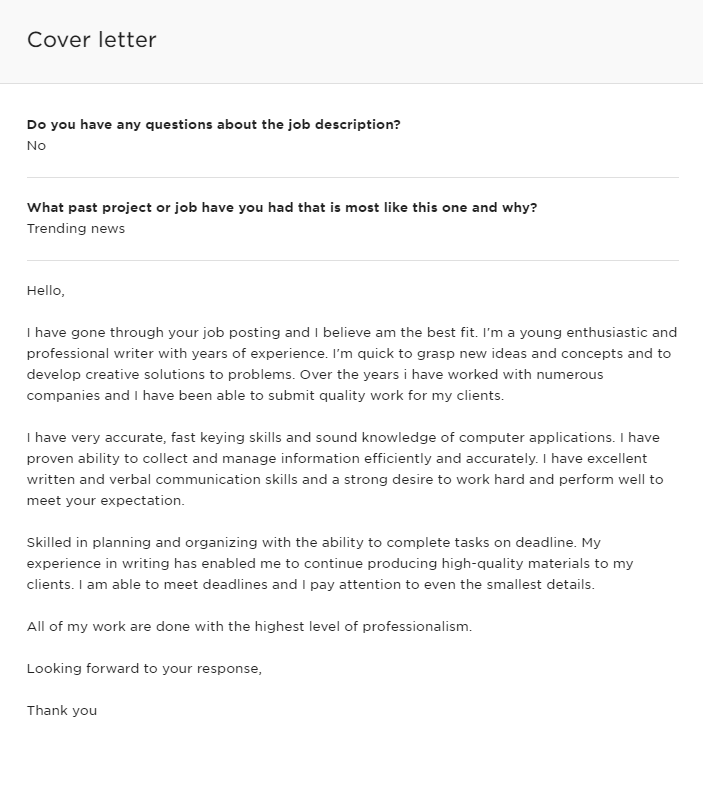
As you can see, clients will see the answers to the questions first. The cover letter will be the last element. That’s why when you see questions in the job posts, focus your energy first on the questions.
In a way, additional questions are more important than the cover letter itself.
Address the Client by Name
Whether it’s an Upwork cover letter, a cold email, or a private message on Facebook, addressing the client by name has a great impact.
After all, names are the sweetest and most important sound in any language according to Dale Carnegie’s How to Win Friends and Influence People book.
But does it really increase the effectiveness of your Upwork proposal?
Well, calling the client by name is just the first part of making your cover letter more personal.
It shows that you have done your research and most likely, the content of your cover letter isn’t canned.
As an example, let’s say that you’re the client and you need someone to write new articles on your website.
One of the proposals you received is this:

Would you hire him? Exactly!
The question is, where will you get the name of the client?
How to Find the Client’s Name
It’s easy enough when the job post has the client’s name.

Unfortunately, only around 1 of 10 posts has the client’s name.
If this is the case, scroll down to the client’s recent history and find reviews from past contractors that mentioned the client’s name.
For example, this job post doesn’t contain any clue about who the client is.
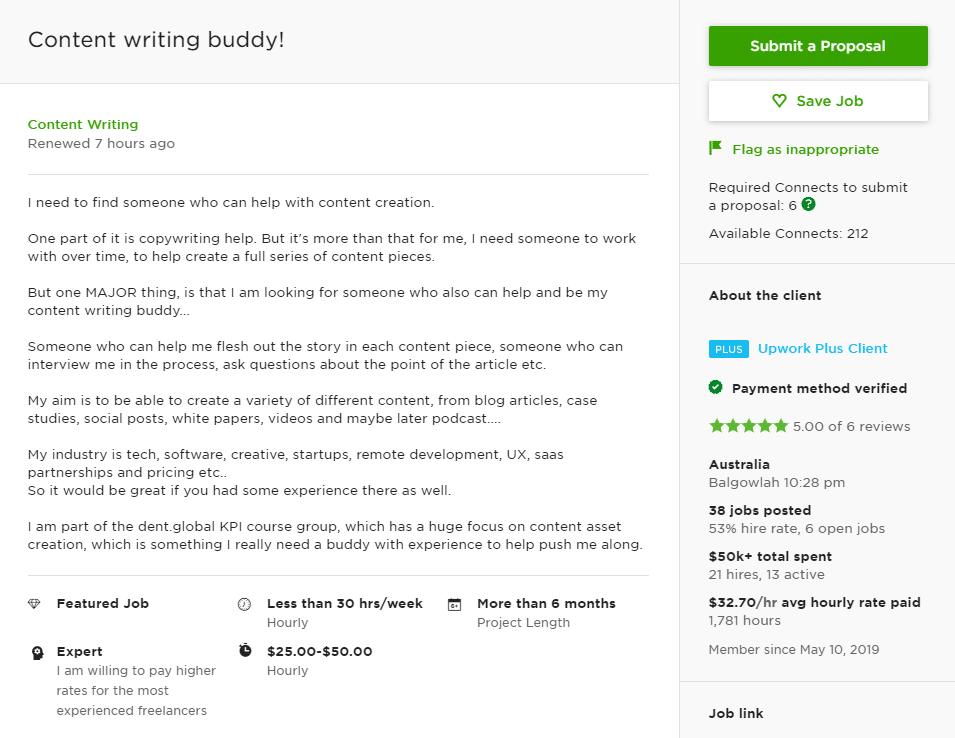
But on the client’s recent history, you will find two mentions of his name there.

Sometimes, you may find different names on the client’s history. Some may have addressed the client as Darren, Karen, or John.
To make matters easier, use the name mentioned in a review from a freelancer with similar services as you.
Let’s say that you’re a content writer. A past content writer left a review and addressed the client as John. In this case, use John in your cover letter.
There may also be instances when the client, together with his name, wrote the name of his company. There’s a lot of gold in here simply because you can make even more research.
One of my clients, when he posted the job, only displayed the company name. There was no clue about the recent history of his name. But since the company name was there, I was able to dig deeper.
Here’s a portion of the cover letter I sent that I’m quite sure caught his attention:
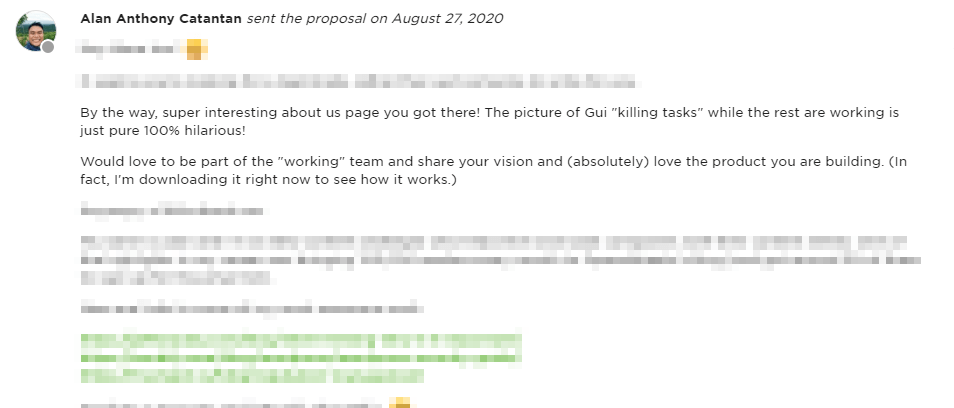
This has led to an active partnership. (I can also confirm that working with his particular client’s team is fun and exciting!)
Show Interest
By that, I don’t mean writing a line that says “I’m interested in your job post.”
There are usually two ways to do this:
- Make a suggestion
- Or ask a question
Let’s use this job post I found about a client looking for a content writer for his travel website:
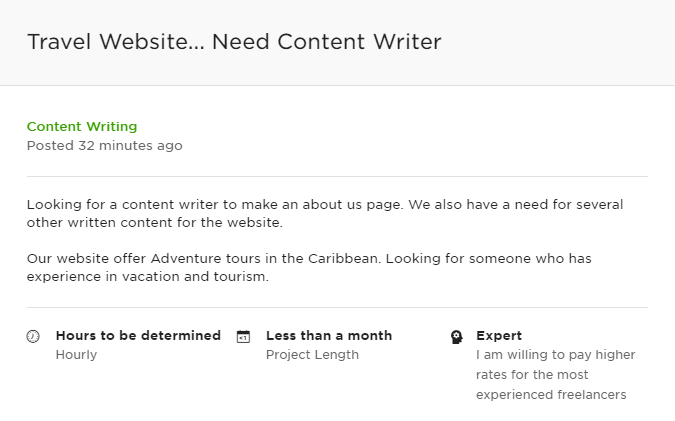
Just because the job description was short, it doesn’t mean you have to put in the same effort and make your cover letter short.
This is often a mistake I see new freelancers do.
But how will you add value to a post as short as this?
If I were to submit a cover letter to do this job post, here’s what I would do:
- Explain to the client what an awesome about us page is and what it contains. (If you’re not aware, the about us page, in addition to telling your story, is an excellent waypoint to different pages or content on your website.)
- Include links to show him what I mean.
- Suggest how I can do the same.
- Ask him for a link to his website.
You can also show interest by mentioning something that only someone who dug deeper will be able to know. An example of this is the cover letter I showed in the earlier section where I mentioned something about the client’s team.
The Rate Matters
This part isn’t much about the cover letter itself but on what job post you submit your cover letter.
One of the things I have learned over the years is that there could be a mismatch between your rate and how much your client can afford or is willing to spend.
For example, no matter how good your cover letter is, it’s impossible for you to ask a high rate for this project.

How did I know this? Looking at the client’s recent history, he paid someone a measly $25 for an educational blog.

From the client’s recent history, you can be certain that he’s only looking for freelancers with (super) low rates.
One more thing: Avoid low-ballers .
These clients will not pay you for what you’re worth. You will only be wasting six connects which you could have used to submit a proposal to a premium project.
Further reading : There are a few job posts that have a high budget but will actually pay you peanuts — they lure freelancers by posting big budgets. This is one of the things I shared in my tips for Upworkers article . It’s perfect for those who are still starting out in Upwork.
Mention Your Experience
I have read numerous posts from “freelance gurus” that you don’t need experience to land premium contracts.
Although there’s truth to it, it’s not the whole truth.
As a client myself, I would like to make sure that the freelancer has the capability to do the tasks and that he’s willing to learn if he doesn’t have the skills yet.
However, freelancers who have previous similar experience and can prove it will most likely win the contract.
Why? Because it’s more certain that they will be able to do the job better and faster, which is a win for clients who go into hourly contracts with freelancers.
In addition to experience, include samples of related work or outcomes that you know the client will love.
For example, after including relevant samples of my work, this client has responded well to my cover letter and we ended up working together.

If you don’t have any relevant samples, just create one, and show it to the client.
Include a Call to Action
At the end of your cover letter, invite the client to do something. It’s proven that they will likely do something if you tell them exactly what to do.
It’s tempting to say “Hope to hear from you soon” or “Hoping for your kind consideration”. But it doesn’t really invite the client to do something.
Here are good examples of effective CTA (call to action):
- Hit that reply button over there to continue our conversation. (Favorite)
- How about we hop on a five-minute call to discuss your business needs?
- If you want to collaborate, let’s discuss it more over the chat.
I have been working with different combinations and so far, the first one has worked best for me. However, I don’t think there’s much difference as long as you keep your call to action, clear, specific, and easy to commit to.
Keep a Swipe File of Upwork Cover Letters
If you’re not familiar with what a swipe file is, it’s basically a folder where you keep all awesome ideas, copies, content, and ideas you have encountered.
In this case, keep a swipe file of Upwork cover letters that worked. Then, reverse engineer them and see why they work.
This is actually how I started improving my cover letter. I found and saved the winning cover letters I found online and try to understand why they worked.
I usually have three places where I store them:
- OneNote (favorite)
- Google drive
- Local drive
A piece of advice: save your cover letters that worked.
Here’s mine:

Since I have a record of what works and what doesn’t, I regularly update and optimize my cover letter to reflect what I recently learned.
That’s how I knew which call to action I thought worked best.
In addition, you may want to include links to your best work too. This makes it easier for you to swap out the samples you want to mention in the cover letter to make sure you only mention the most relevant work samples.
Example of a Winning Upwork Cover Letter
As promised, here is a cover letter I used to land a premium deal with a client.
Note that you can use the pattern I set but make sure you don’t use exact words. This cover letter was designed solely for the certain job post to this cover letter was submitted to.

In a gist, here’s how I did it:
Hey [name] , I’m sure you’ve got a lot of pitches to deal with so I’ll keep this short. I help [your target industry] [the outcome your client would like to get from your service] . In the past, I helped [a previous client you worked with] [the outcome you helped your previous client achieve – should be similar to the outcome the client would like to get] . Here are links to some of my work: – [link 1] – [link 2] – [link 3] [Ask a question or suggest something] Simply hit that “Reply” button over there so we could continue our conversation. Regards, [Your name]
Feel free to use this template.
Win Premium Clients With a Personalized Cover Letter
Writing a winning cover letter is easier than you think. But it will need a lot of practice and trial and error to finally get it right.
As I said, it took me so much time and proposals before I got a reply. From there, I continued optimizing it and seeing what works for my target clients and industry.
I’m definitely positive that as you practice and write more proposal cover letters, you will get better and win jobs.
And if you get lost, try the template I provided above.
Now it’s your turn. Here’s what to do now:
- Go back to Upwork and apply what you have learned from this article.
- Use the template and check my sample for inspiration.
- Get back here and let us know how it went.
And as always, let me know your thoughts by sharing your comment down below.
Alan is the founder of Work Pajama and other sites by Content Growers. When he's not writing here, he's busy helping clients generate more qualified leads and increase sales by educating readers with strategic content and writing blogs.
Related Posts

Best Freelance Translation Websites in 2024 (Compared)
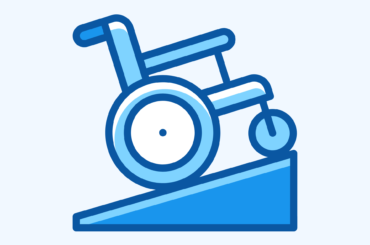
Legitimate Work From Home Jobs for Disabled People: The Guide
25 comments.
I am new and wanted to have virtual work ASAP. Thank you for this blog, will surely help me with my application. Wish me luck!
Stay safe always.
Hey Genera! Glad you find this article helpful to you. I know you can do it! I was able to do it even without experience (or skills) at that time so there’s no way you can’t do it.
Keep it up!
Hi sir I just want to ask in upwork sometimes it offer milestone in specific job how can i break the budget into milestone and what will a put in the description of each milestone ? Thanks God bless
Thanks Alan. Let me go back and re-strategize
Thank you so much for sharing this very informative article. I’m about to start my GVA career… your blog post truly help me a lot. I hope I could make it in this industry.
Good luck on your journey!
I am inspired by your post and I made some notes out of it. I believe it will go a long way to help. Am a newbie in upwork; am good in data entry, typing and I can handle Microsoft Office. But I do not have any past experience in any company or works done before except personal. How do I start, my first cover letter was rejected. Please help out, I will appreciate it. Thanks
My most regards, Hilary
That is tricky since the skills you have are the same skills that 99% of Upworkers have. If I were you, better learn a better skill and try again. For every job post that needs basic stuff, the client probably gets 100+ proposals, so your chance of even being seen is super low. Hope this helps!
thanks so much for this awesome reply of you Alan. We’ve same issue with Hilary. I think your reply here will surely help. Better learn a better skill!
Good to know. Thanks for dropping by!
Thank you for this Allan. This is very useful specially for people like me, just starting careen on being a Virtual Assitant.
Happy to help!
Wow, great tips on writing an effective Upwork cover letter! I completely agree with you on the importance of mentioning your experience.
Including samples of related work or outcomes is also a fantastic idea. It provides concrete evidence of your skills and expertise, and it gives the client a glimpse of what they can expect from you. If you don’t have relevant samples, creating one specifically for the client is a brilliant approach to showcase your abilities.
I also appreciate the emphasis on including a clear call to action (CTA) in the cover letter. It’s true that clients are more likely to respond when you tell them exactly what to do. Your examples of effective CTAs are spot on, and it’s important to make them clear, specific, and easy to commit to.
Overall, these tips are insightful and practical. Thank you for sharing your expertise and experience in writing Upwork cover letters. I will definitely implement them in my future proposals and strive for better results. Keep up the great work!
Your style is so unique compared to other people I have read stuff from. Thank you for posting when you’ve got the opportunity, Guess I will just bookmark this site.
Thanks Eileen!
That’s quite an interesting read. Of late I figured out that it is very difficult to get new jobs in Upwork, though clients are viewing my proposal. So I feel the best way is to rewrite the proposals. Thanks a lot for your input.
Hi Alan, this was very very helpful and am looking forward to learn more from you. I would hope that a Q&A platform will be provided in place for people like us who would wanna feed from your brilliant experience. Thanks!
Thanks, Alin!
Just discovered your content through Google search. Awesome and unique content. Just about to start freelancing on Upwork and I can tell it is of a great help to me. I believe I’ve just find a good teacher here.☺️
Thank you Allan and God bless you.
Hey Patrick!
Appreciate the compliment. I wish you a good fortune on your journey.
Thank you Alan! hope it works. Good luck for everyone.
Hey Alan! Best inspiration tip, Thanks alot.
Excellent information. This article offers practical tips and a clear structure for crafting effective Upwork cover letters. It’s a valuable resource for freelancers looking to stand out and secure projects on the platform.
Thank you for this fantastic guide on writing a winning Upwork cover letter! The tips and sample you’ve shared are incredibly helpful for both beginners and experienced freelancers like myself.
The sample cover letter is a valuable resource. It not only demonstrates the principles you’ve outlined but also serves as an excellent template for crafting our own personalized letters.
Write A Comment Cancel Reply
Save my name, email, and website in this browser for the next time I comment.
Type above and press Enter to search. Press Esc to cancel.
Last Updated on September 6, 2023 by Alan Anthony Catantan

Tips & Tricks For Making More Money Online

How To Write An Upwork Cover Letter: 5 Tips + Free Template
One of the reasons most freelancers struggle to land clients on Upwork is failing to write a convincing cover letter.
The cover letter is the main component of your job proposal and if you don’t write it well, you won’t be able to get the client’s attention.
Each client who posts a job on Upwork gets dozens and sometimes hundreds of proposals from freelancers. And the only way to grab their attention is to write a cover letter that addresses their needs and requirements.
So if you’re new to Upwork and trying to land a client, keep reading. This guide will help you write better, more focused, and well-optimized Upwork cover letters to get more responses from your clients.
What Is An Upwork Cover Letter?

The cover letter is an essential part of a resume or CV. Normally, when you’re applying for a job, you include a cover letter with your CV to let your potential employer know why you’re applying for the job, what kind of goals you have, and why they should hire you for the position.
Upwork cover letters use the same concept. Whenever you’re applying for a job on Upwork, you now have to fill out a section called Cover Letter.

Here, you can write a detailed yet concise message to clients explaining how you can help the client and why you’re the best person for the job.
As you can imagine, this is a crucial part of a job proposal that will determine whether you will get the job or not.
Before You Apply For Jobs..

Before you apply for jobs and start writing cover letters, make sure you complete the following steps. Because without these steps, clients will never hire you, even if you write the perfect cover letter.
1. Improve Your Communication Skills
Improving your communication skills is the first thing you should do before applying for jobs.
Learn to write better messages to clients and learn the proper etiquette for writing emails. You can follow this guide to learn more about it.
Also, I highly recommend that you take an online course on copywriting and business communication. Think of it as an investment in yourself.
And it will go a long way to help you write great proposals, cover letters, and communicate with clients like a professional.
If you’re interested, start with these Skillshare classes:
- Business Communication Skills: Write & Speak More Professionally
- Copywriting: Essential Skills For Writing Engaging Marketing Copy
- Professional English Emails: Write Clearly and Effectively
2. Optimize Your Upwork Profile
The next thing you need to do is optimize your Upwork profile.
When you apply for a job and send a proposal to a client, one of the first things they do is check your profile.
Now imagine doing all the work to find the perfect job and write a great cover letter while you have a terrible profile. It will only send those potential clients away. Don’t make that same mistake.
I wrote a complete guide on creating an effective Upwork profile. Give it a read and optimize your profile accordingly.
3. Gather Some Samples
Now, you can say all you want about your skills and abilities in your proposal but the client will never believe you if you don’t have hard evidence to back your claims.
So make sure you have some samples of your work to show the clients.
If you’re a writer, you can include links to your previously published articles.
If you’re a graphic designer, you can include a link to your portfolio.
If you don’t have any links to show, attach sample documents and files in the proposal.
4. Ask For The Right Price
When using Upwork to find jobs, asking for the ideal price is very important. Because it’s always going to be a bidding war between freelancers.
But the key to finding the right price is not to ask too low that clients think you’re desperate. Or ask too much that turns clients away.
To figure out the sweet spot between the two, you can check the Upwork services section.
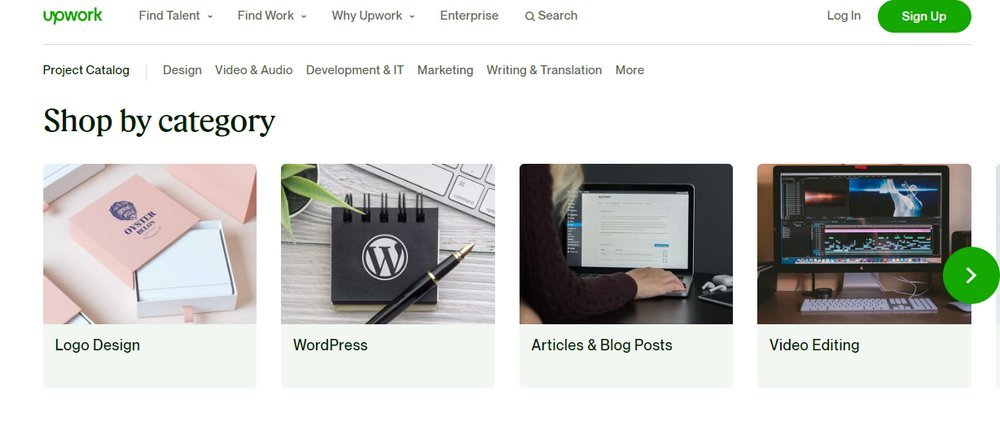
Browse the category related to your work to see what other freelancers are charging for similar jobs.
Then come up with a price that fits your client’s budget and the regular rates at the same time.
5. Only Apply For The Right Jobs
There are some freelancers out there who apply to every job that comes up in their feed while copy-pasting the same cover letters and proposals.
This is a huge mistake that will get you nowhere.
Learn to pick the right jobs that fit your set of skills. Find jobs that have detailed descriptions that give you more information about the job. So that you can research the client and their industry to write better cover letters.
What To Include In Your Cover Letter

Once you complete all the initial steps to optimize your profile and writing skills, here are the most important points you need to cover in your cover letter.
- Address the client by their first name (eg: Hi John,)
- Mention that you’ve read the entire project description
- Do some research to understand what the client is asking for
- Provide solutions to the client’s pain points
- Mention why you’re the perfect person for the job with facts (eg: I have 5 years of experience in social media marketing and I worked for client X)
- Show examples of your previous work, portfolio, or client case studies
- In the end, mention that you have a strategy in mind for the client’s project and ask them to DM you for details
- Remember to keep it short, detailed, and concise
You’ll see how all these points come together in the example and the cover letter template below.
How To Write Cover Letter for UpWork
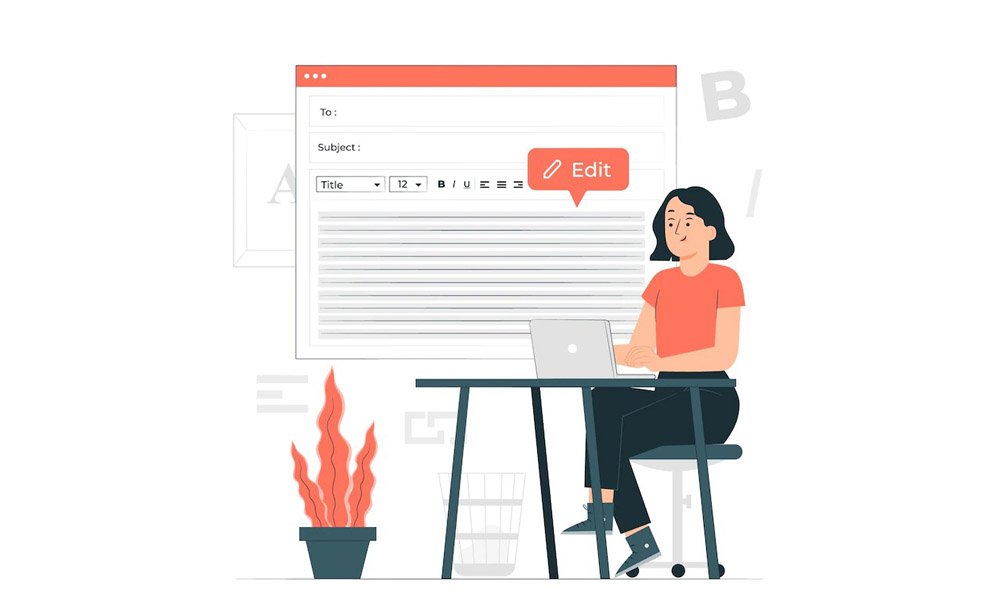
It’s best to write the cover letter on different software like Google Docs or MS Word and then copy it over to Upwork. You wouldn’t want to accidentally hit send while you’re writing the cover letter.
As I mentioned before, learning to write well is very important. Taking a copywriting class will not go to waste.
Take all the key points I mentioned in the previous section. Write in friendly and simple words to describe your proposal for the client.
Here’s a quick Upwork cover letter example to show you how it’s done:
Hi John, I read your entire job description and I think I’m the perfect person for the job. Here’s why: -I noticed that you’re looking to build an online store website. I think WordPress is the best platform to build your website and I have over 5 years of experience building WordPress sites -I’ve built WordPress websites for many clients including CocaCola and Pepsi -Here are just a few of the links to websites that I’ve recently built for other clients (include links here. Or attach your sample documents) -I have a really great concept idea for building your website that will make your brand look even better than your competitor (Do research to find the competitors and mention the name here). Send me a DM or respond to this proposal so we can discuss more details I’m really excited about this project and to work with you to build something amazing. Looking forward to your DM. -Your name
See how simple and concise that looks. And we covered all the key points in that 150-word cover letter. You can easily edit this message to include skills and experience related to your industry.
There are also great tools you can use for writing your cover letter online . They offer more professional-looking layouts that you can easily customize, which are ideal for applying for not just freelancing jobs but for any type of job application.
Free Upwork Cover Letter Template

I made a more beautifully formatted Upwork cover letter template that you can use when applying for jobs. You can download it below.
Make sure to edit and customize this template according to your needs.

5 Tips For Writing Professional Cover Letters
Follow these quick tips to make your cover letter look more professional.
1. Keep it Concise and Clear
Write a concise and well-structured letter. Keep it to a single page and use a professional tone. Use short paragraphs or bullet points to convey information effectively. Avoid excessive jargon and focus on presenting your qualifications in a clear and compelling manner.
2. Highlight Your Relevant Skills
Clearly communicate how your skills and experiences align with the job requirements. Use specific examples to demonstrate your qualifications and achievements. Showcase how your unique abilities can contribute to the success of the company.
3. Research the Company
Take the time to research the company’s values, culture, and recent projects or initiatives. Incorporate this knowledge into your cover letter to demonstrate your genuine interest and alignment with the company’s mission.
4. Address Potential Concerns
If you have any potential concerns or gaps in your experience, address them proactively in your cover letter. Explain how you plan to overcome those challenges or how your transferable skills make you a strong candidate despite any gaps.
5. Proofread and Edit
Ensure your cover letter is error-free by thoroughly proofreading and editing it. Check for spelling and grammar mistakes, and ensure proper formatting. Read it aloud or ask someone else to review it for clarity and coherence. A polished and error-free cover letter demonstrates your attention to detail and professionalism.
Images via Freepik.com
Leave a Reply Cancel reply
Your email address will not be published. Required fields are marked *

Have You Proposed Right? Part 2: How I Wrote Winning Proposals (with Upwork Cover Letter Examples)
Part 1: How NOT to Write a Winning Proposal demonstrated all the tragicomic approaches for writing proposals to projects on freelance platforms such as Fiverr, Freelancer, PeoplePerHour, Upwork, etc. The article gave plenty of tips for getting it right also.
Now for the good part. The part where you learn how to write a compelling Upwork cover letter, consistently!
I’ll give you a detailed description of the process that I take to nail the proposal process from the beginning to the end. I have to admit I haven’t had much need for this lately because of relying on direct invitations from clients, but I can still remember the process from those days back then. All the projects relate to AR/VR technologies, usually to making Microsoft Kinect apps, obviously because that is what I specialized in from the beginning.
There are two mediums here: online freelance sites that force a certain process and format, and direct proposals to clients as free-form documents which could be suitable for online and IRL quotations for larger projects.
Part 2 will cover the standard case of proposals sent via freelance platforms. Regardless of the platform, the normal process includes (as mentioned earlier) the following steps:
- Searching for a suitable project
- Crafting the Upwork cover letter
- Discussing with the client (i.e. the interview)
- Proposing the business deal
- Signing the agreement
I will try to use fewer dating analogies in this part to keep things readable for you. Some meme pics are unavoidable, though, haha.
If you are t oo fast, you just get slapped in the face. If you are too slow, someone else gets the gig. This is the art of proposing.
Step 1: Searching for a suitable project
When you are browsing for projects, be sure you know how to read what the client is asking. There are two targets you have to consider: your quotation and your profile page. Additionally, your homepage, LinkedIn page, and such would need to be consistent as some clients may do a thorough investigation on your numerous online profiles before sending you any message.
For example, if your profile on the freelance platform mentions “web developer,” your homepage lists frontend technologies being your passion, you have no reason for applying for full-stack e-commerce projects as the keywords would give different weighting of what your skills and passion actually are. Consistency, consistency, consistency.
There could be a situation where your dream project is available to you, but the project description includes keywords (perhaps written by a non-technical client) that do not match the keywords in your profile. Theoretically, you could revise all of your profiles for a while to make that perfect proposal for that particular client. “All in” is a viable approach as long as you don’t have other proposals being reviewed at the same time. (I cannot say I have tried this myself, though.)
Let’s assume all of your profiles are more or less in line. Then it makes sense to search for specific projects. It may not help you so much if you see things through your wannabe freelance rock star glasses. You would need to be able to think it from the client’s perspective. How to know which type of client you are looking at? Well, you would need to read the project description carefully, twice.
Let’s go through a couple of examples of how to “read twice.”
The project is listed as a project for the Intermediate experience level with a fixed price budget of $10.
“VR designing (make a VR simulation):
I’ll give a picture and you should make a 3D modeling and make a VR simulation.
There are several things to change their colors and shapes, so when I see through the VR simulation, I could select the options (change color or change shapes) and watch the results.
I’m not sure about the payment of this project, so I put $10 but I’ll listen your voice, so please suggest the payment of this project.”
So, at first glance, you could say this looks fake because the budget is $10 only. In case you are using some filters in the search, you would never encounter this project post. That’s why plain keyword searches work best since you will be able to see all of the projects available regardless of the client’s skill in using the platform. Some of the very vague project descriptions worked out just fine after getting a hold of the actual person behind the keyboard, so do not overlook projects that look strange at first. The second time of reading, it might look much better.
Let’s play Sherlock Holmes now. In the above case, what clues can we see? What is obvious and what can we deduce?
Look for clues about what the client is like. You don’t need to be Sherlock Holmes to read between the lines, but it sure does help! In the best case, you don’t need to doubt.
Let’s list conclusions and clues leading to them point by point.
- He seems not to know the difference between design and programming. The job looks like being mainly about 3D modeling, actually.
- No programming language is mentioned.
- No hardware is mentioned.
- The expression “see through the VR simulation” is something not used by techies. Techies would also probably not say “several things” but “several objects.”
- The price level seems to be unknown (and in fact, it is possible to quote without knowing at least the hardware which may define the development stack and so on).
- The client does not specify the VR hardware to be developed for.
I’d say there’s a great opportunity in this project! You would be able to:
- Define the requirements and explain them to the client in a way he understands them.
- Set the price according to the value of the client (once you hear more).
- You might be in the position to suggest the hardware that you already have. (Yes, you deduce correctly that I have done a number of projects on hardware sent to me by the client.)
Only one way to find out: go and propose! Preferably, do it right. 🙂
The project is listed as a job for Expert experience level with a high hourly rate.
“Kinect-based game:
Hi, I’m looking for a professional game developer to create a simple Kinect game (Kinect 1 or 2).
The game is based on this Kinect game: [Link to a YouTube video]
Our version is much simpler, but the concept is similar.
See mockups attached to this link – [Dropbox link]
This is a two-week project that starts as soon as possible, so please only people with high availability needed. The project can be in Unity, Unreal or a different engine.
[Nickname of the client]”
Let’s list conclusions again:
- He seems to know about the keywords (Unity/Unreal) but has no clear idea about the programming side.
- There’s a clear idea about the scope, cost, and a number of people, so project management seems to be his strong point.
- Mockups are provided, i.e. just the programming needs to be done on any stack preferred by the developer (as most design assets can be imported to any game development tool).
- Deadline is coming soon (no offense to any designers, but that’s how all of my designer clients seem to be, so far).
- The video links show the reference app being used in an event.
- Saving the day is good business for everyone! Failed projects kill small businesses, so failure is not an option here for this client.
- You can choose the stack you can develop fastest.
- The project looks like not having much time for design iterations and there are already mockups from the client, so the chance of stretching the project’s end date is very small.
I’d say again that there’s a great opportunity in this project! You would be able to:
- Work with good, capable designers in a setup where everyone is doing what they do best.
- Select much of the stacks and tools as you prefer and are fast to develop with.
- Charge your expert rate “to save the day” for the client, who is apparently in need of fast and good freelancers. (Slow and good would not do, and fast but not good are never needed.)
Only one way to find out: go and propose right! Again. 🙂
The project is listed as a job for Intermediate experience level with a mid-range hourly rate.
“Kinect depth camera recorder:
Looking for an individual who has experience developing with the Kinect 2.0 SDK. The individual must be knowledgeable with C# and/or C++. We are looking for a programmer who can help us develop a recorder for the Kinect depth stream with Visual Studio. Will be working alongside one of our employees to get this completed.”
My conclusions this time are:
- Uses technical keywords such as C#, C++, and names the SDK version specifically as 2.0.
- The experience level is not Expert level although the job is far from typical in the marketplace.
- There is a clear expectation of working in collaboration with one of the software developers on client’s side who will probably do integration work. The freelancer is expected to know Kinect better than the company’s own software engineers.
- The project is split so that there is no need for additional non-disclosure agreements because the interface of the software to be developed will be specified very accurately by the client’s employee. That’s mentioned upfront (which is good).
- If the project leads to a new product, the client might want to take all credit for creating it.
There’s nothing wrong with this project! It’s well specified and can go really well as long as you can:
- Accommodate the collaboration mode (time zone, language, communication style, and frequency, etc.)
- You can give a rough estimate of the job, even it is mentioned to be a job with hourly rate compensation. A technical project manager is sure to ask for this.
- If the start of the project goes well, there could be more to be done than what is mentioned, so the project could grow from the initial scope.
The project is listed as a $2,000 fixed price gig with minimal description.
“Kinect solution:
We want to develop a solution for retail.”
That’s it. The obvious conclusions can be drawn in a few seconds, of course:
- There is little more here for you than an endless discussion on what hardware and what overall solution you would need to deliver.
- After long discussions, you would most likely need to help the client specify the hardware after which the communication might stop. Possibly a Shopper who only wants to get partial or complete specifications of a good solution for free or a Flash who has no time to do anything properly.
- The price, even if tentative, is probably too low to be considered seriously (because of the above reason).
You will be better off skipping these kinds of project descriptions. Mere title-level descriptions correspond with the client’s ability and/or time for writing up the requirements. I’ve sent tentative quotations to some projects of this type and none of them worked out. 0%.
There are a number of these kinds of “bad apples” listed in the online marketplaces, in fact. You cannot quote properly and you can hope to be called for an interview for which you cannot prepare for, so you can only “swing it.” All you really end up doing is spending time with the client to plan the project for free. After some early trials and failures, I started to skip all these kinds of opportunities.
How to pick?
Now, let’s say you have a couple of good projects shortlisted for sending a quotation. You can choose to quote for all of them quickly or save your time and do one quotation really well. I have a couple of principles that help to make the decision:
- Favor non-technical clients if you are up for it (see my discussion on the sweet spot ).
- Pick the most interesting one (as a happy freelancer is always the most productive freelancer).
- Pick the most realistic-looking one (i.e. enough info, reasonable budget) which should produce the least amount of hassle.
- Work for the most interesting person (if any info about the client is available) as the connection could turn out to be very useful later on.
In any case, no matter how many quotations you are planning to send, don’t copy-paste anything ! Every project is different, so you bet every proposal needs to be different. You are about to propose a business deal to another person so that the other person needs to feel that you wish to work in particular with him or her. It is much better to take the time to craft the proposal properly than send some quick stuff over to someone else, especially when your aim is to get the person to pay you real money. Only the properly done proposals lead to proper projects … and you don’t want to get the other ones anyway.
Step 2: Crafting the Upwork cover letter
Now the juicy part. How to write a great Upwork cover letter, i.e. a short description of what you can do for the client in a way that attracts the client enough to step into a closer discussion with you? It’s not so easy and takes some thinking every time. Think carefully, write skillfully.
Your goal in this phase is to attract the client in the right way. Not the wrong way.
Let’s go with the above examples. Please note these are all real-world cases from my logs, i.e. proven to work!
I’m not sure about the payment of this project, so I put $10 but I’ll listen to your voice, so please suggest the payment of this project.”
My Upwork cover letter looks like this:
“Hello! I’m Dr. Mike, an expert in creating VR simulations of all kinds, usually for training simulators. I could do this very quickly. Mainly I’d need to know which VR device you’re planning to use. I can also offer some help deciding the device if needed.
Feel free to take a look at my portfolio here and ask for more information. I can send my portfolio PDF as well.
I offer very fast turnarounds on these kinds of small projects and I execute them on a CTO level. You don’t need to worry about anything even slightly technical.
The price I listed is tentative and matching a couple of weeks’ work. It is subject to changes as soon as I hear more about your exact aim. If possible, please share the image you want to be turned into a VR experience.
Looking forward to hearing from you.
Best regards,
The tentative price I set is $5,000. Why? Mainly because I just don’t do any smaller projects to protect my profile. All projects the past couple of years have been $10-20K whereas most go in the $1-2K range. Past big projects attract new big projects, the rest is left for those freelancers who enjoy their proposal battles against their peers with a similar skillset and background.
Why did I write as I did? A couple of reasons:
- I don’t see the person’s name, so I cannot include that in my “hello.”
- The word “simulation” indicates something possibly relating to training simulation, so I’m simply taking a blind guess here. I cannot know, but it does not matter. If I guessed right, and the project is really about training simulations, there is a good basis for hiring me as I have an extensive background in that specific types of applications as shown in the latest portfolio item. If it is not, I don’t probably miss anything really good, actually. No way to lose!
- I offer to send an additional portfolio in case there is something not mentioned that could be relevant here. Normally, I do not mention it, but the client may get it upon request.
- Taking care of everything technical (as this is clearly a non-technical client) including the choice of hardware, which should make my proposal look like a safe choice.
- Tentative schedule (even if I’m not sure about the scope).
- Tentative pricing. This is important to mention so they do not jump to conclusions.
- I ask questions about the hardware and if the image could be shared, both done as an indirect questions in the sentence. Now the barrier for sending the next message should be minimal. The client can simply answer those questions and then we are already in the next step: Discussion.
There we go. If the client accepts the proposal at least to the extent of discussing further, the project is mine and the price is good, for sure. For my part, if the tentative price is the problem, I would not want this client anyway. Everybody wins! That’s how a good deal should be in any case. 🙂
Although the project is vague, writing and sending the proposal didn’t take many minutes. I don’t even know if I have the right hardware, but in case I get to suggest, of course, I would recommend one of those that I already have. Cost-efficiency with speed.
My Upwork cover letter with the full hourly rate (which was about double to most others at that time):
“Hello [nickname of the client],
I’ve developed a bit more complex games to be used in a shopping mall (please see my portfolio). I’ve made two similar installations, both with 0 bugs reported.
This is doable in 2 weeks, especially if we only use the depth image from Kinect to visualize those 2 players (no 3D avatar animations). I’d book a day or two for making a decent scoring algorithm using just the depth image matched against the target hole/silhouette. I’d implement this using Kinect 2 for Windows (Windows 8, 8.1 or 10) and Unity3D 5.4.
How many levels would you need (or how many minutes of gameplay)? Would you provide graphics or shall I make something up? Where do you plan to deploy this?
For Kinect installations in public places, there are some concerns that I recently wrote an article about… can share with you later, if interested in my empirical tips & tricks.
The timing happens to be perfect, I can start on 16th and finish by the 28th.
This was something I know before even sending the proposal that I nailed it. What the client is asking is so similar to what I just finished, so even the timing was in my favor! Unfortunately, by the rules of the platform, I cannot include direct links to my blog post which I just wrote about the previous project.
The only thing could be an issue with the price, in case the client has not been able to charge their customer very much. That’s the only unknown here. So, what I did this time is:
- I jump straight to the topic and skip everything else except the most relevant thing. I guessed the purpose of the application (an event of some sort) so I can directly mention that being similar to what I just did in a previous project.
- I claim I can provide high-quality work by pointing the client to my portfolio items of projects that were finished flawlessly.
- I suggest the best hardware for the purpose and its practical impact so that at least one problem is already solved before we enter the discussion phase.
- I mention the stack that I’d use, which matches the one the client had already imagined, just to confirm we’re are “technically compatible.”
- I ask three questions about the specifics, which shows that I’m interested and curious and that I can find a collaborative mode easily (e.g. who should be in charge of making the graphics).
- I indicate that I write a technical blog on this very topic. What the client is asking is what I just did for someone similar to this client and have experience of making the whole thing work, not just the technical bits. So, obviously, in the client’s eyes, I should be the guy who also knows the client’s domain and not just the technology.
- I promise the delivery time to be within safe limits so the client does not need to worry.
All in all, my proposal is a bit longer than the client’s but still exactly to the point. Nothing irrelevant is included. Of all the freelancers available to the client, working with me should look like the safest option. Everything necessary is covered: quality, deadline, and collaboration mode.
The project is listed as a job for the Intermediate experience level with a mid-range hourly rate.
My short Upwork cover letter with full hourly rate price is matching with the length of the project description:
My name is Mike, I’ve worked for the last 4 years exclusively on Kinect and Kinect 2.0. I’ve made color/depth/skeleton stream recorders for a couple of clients as well as a recording analysis tool of my own. Also, I’ve developed a very compact file format and encoder/decoder library for Kinect data.
We could have a quick Skype call and discuss your requirements for development or just consulting to guide your employee through the development steps.
I hereby attach a short portfolio that includes a slide on my analysis tool among other Kinect projects.”
What I did here is:
- I skip “Dr.” here that I usually include. I just thought being less formal in this case might fit better the short story I give him.
- Unlike in other proposals, I mention the exclusive focus on this type of application and the number of years doing it. Usually, the number of years does not impress very much.
- Keep it short and to the point. As this is a technical client, I want to save his time from reading a lot of introductions or list any other things than exactly those technical bits that are relevant (image streams and encoders).
- Invite the client directly here to a Skype call (which I don’t do always at this stage) as I assume to talk with the employee directly which is not the same person as the one posting this job. So, let’s open the communication channel ASAP.
- I give two options for the collaboration model to appear flexible and goal-oriented. Whatever works, works, let’s do it.
- I add a portfolio PDF so that the client does not need to read more when browsing the proposals.
Additional portfolio documents may come in handy sometimes. Most of the time you don’t need them, especially if working through platforms that offer portfolio pages linked to your freelancer profile.
I have a master version that includes all notable freelance projects I have done from which I can cut a specific shorter version for any client to keep things concise and to avoid overwhelming the client with too much information.
In this case the portfolio PDF I sent included:
- A short introduction of my own background
- Five pages, one project per page.
- Every project that had any kind of recording function is highlighted so that the client cannot miss seeing my previous experience on the exact challenge is his project.
- One of the projects is obviously the encoder/decoder thing that I made years earlier.
- The first project is from four years ago, thus backing up my claim of years of experience.
The project is listed as a $2,000 fixed-price gig with minimal description.
As deduced earlier, this minimalism is evident in the case of less serious clients, but as this was one of the discussions long ago, I can demonstrate the main steps of what you expect.
I didn’t spend two minutes writing my proposal, in which I mention the most similar project I’ve done and the minimum price of a project that I do. It led to a long discussion over the next almost three weeks, where:
- We exchanged images to understand the exact use case.
- We stayed purely on text chat-basis for all communication.
- I got very late replies starting with “Hello, sorry for the late reply, just noticed this, …” and so on, which is a direct indication of the project not being very important even to the client.
- I got the feeling there was already part of the work completed once some of the messages and links to similar works that I sent had already some value to the client.
- After learning about the exact scope (finally), I landed the actual price being around $10K which is when the client could only say “I have to discuss with my team, but I think that is a little over budget.”
The end. That’s how these things go. Nobody good would need to engage in a project like this. Just skip.
Step 3: Discussing with the client
Now, you have got the client’s attention and there is a good positive expectation: a very rough plan and a tentative order of magnitude price. What’s left is landing the project for real, with a complete plan and collaboration mode figure out with a price tag on it.
What’s left is these remaining steps:
Unfortunately, these parts are the art side of freelancing. There is little point in giving examples of exact discussions as every single discussion is very different. All I can do here is list some principles that you could apply to your discussions. Somehow, you need to produce the right feeling on the client’s side of the table so that things start rolling. Looking too eager won’t do the job. Being unresponsive or distant will not work either. You have to be matching with the client’s style on multiple levels to succeed.
Match with the client’s style to create a good connection, whatever the style is. People are wired to like similarities and dislike differences on a subconscious level, which is something very useful to be kept in mind.
Tips for discussion
After getting a reply from the client on your proposal, this step is the key to everything. This is when you have to:
- Being curious and enthusiastic about the client’s project and overall goal.
- Demonstration of your competence done quickly, e.g. by talking about the closest work you have done to the project in question and what came of it.
- Create a collaborative, positive atmosphere.
- Understand the exact goal of the client.
- Find a way to get your client to that goal and communicate it clearly in a step-wise manner.
- Agree on who does what when the project starts.
- Give a clear indication of the price of the project. This must never be a surprise in the next phases!
If this step is done right, few things can go wrong in the last steps. It is good to be conscious that there is a huge variety of approaches the client might prefer. Some clients:
- may ask you a lot of questions as in a job interview especially if they have a lot of experience in hiring. Nothing wrong with this approach, actually, it’s just a preference and routine thing.
- might ask some simple coding tests to be done (which I’ve never been asked to do, except in the case of that scam I wrote about earlier).
- may want to know what kind of a successful person you are and ask much about your life rather than keeping things strictly about business. Nothing wrong with this either.
- want to keep things in text-only mode all the way long because of their own preference. But I have to mention all the good clients I have found through freelance platforms have taken the step to do either voice or video calls. Creating a good business relationship is important and that’s done by the individuals involved.
Chitchat is fine if that’s the client’s preference. Some prefer to stick with the topic. Be sure to swing both ways! 😉
The language barrier
One important thing must be understood: always write and speak in the client’s language. For example: If I’m prospected to work as an expert in a technically capable team, I can use the software slang and jargon like repo , stack , names of all the code design patterns, and all the abbreviations we developers use. I may ask them to spec the work properly, as they know exactly what it means in the discussion. Part of the vocabulary works with semi-technical clients, such as design houses.
However, if I’m prospected to do CTO-as-a-Service for someone non-technical, asking about their repos , stacks, and specs only wastes the time of everyone involved. It would be part of my job to manage all that once the product or service-level business-related requirements have been defined.
I remember seeing a funny discussion where the client mentioned just vaguely “I’m looking for someone with solid experience in web development” having the intention of getting an experienced freelancer for the job and excluding all entry-level developers. The client got an extensive reply from the freelancer explaining what he knows about Solid .
It is understandably difficult to read the need for “solid experience” as “experience in Solid,” it happens. Pure text-only discussions can be tough, sometimes. Voice or video is preferred. Sometimes, text chats get so complicated that the client just gives up in frustration. You have to be able to read the type of the client between the lines to get the tone right in order to communicate on the same level, then you can get somewhere.
Do your research
Many may not realize, but once you get to know your prospective client a little bit, you may get to know the name of the person as well as the name of the business. Be sure to go online and absorb all the public information you can get! Knowing what business the client is conducting increases your chances of proposing a deal that is attractive.
You may demonstrate your understanding and high level of involvement by discussing how the project result will benefit the client’s customers. It’s is actually a good thing to say “Hey I had a look at your website and thought that …”
I would argue that doing background research is one of the most important things in getting into the head of the client. What the company does, who they sell to, who their suppliers are … all this will help you to get the big picture and reasons why they want to hire a freelancer for the job. All this knowledge will play to your advantage.
Often it is the discussion phase where you learn who the client is, but sometimes you get to know that from the beginning which helps a lot. Some project descriptions include the company’s name. In that case, do your research as early as you can to guarantee that your own understanding of the client’s ultimate aim is complete. Also, background research done well reduces the time spent on discussion, so you don’t need to take as a heavy “additional step” in the process of getting a freelance gig.
Sometimes it happens that no matter the length of the discussion, you simply won’t get much information on the client. This is always a pity and it definitely hinders you from getting a full understanding of what you need to do for the client. Not being able to do background research and staying in text chat only -mode is a combination that may lead to misunderstandings and false expectations on both sides. Avoid this at all costs.
Project type and milestones
Another aspect of the discussion phase is deciding the project type. Most platforms offer fixed-price or hourly-paid projects, both of which have their good purposes. Getting mixed up on this level will only result in a miserable outcome for the freelancer.
Fixed-price projects end only when the client is completely happy with the end results, not a second earlier. Additionally, you may have to offer some support after the payment, e.g. for bug fixes in case you make one or two. This is important to make the client feel safe about working with you.
Once the deal is there, you cannot change it so much, unless there is a clear increase in the scope, e.g. an entirely new module to be built. How to make money out of fixed-price projects as a freelance developer is related to your mastery of making estimations and managing the client’s expectations. The first part is only about your ability to manage your own work. It’s an operational aspect. The second part is all about communication and customer relationship.
I have a simple trick to nail both at the same time. During the discussion phase, I take the effort of splitting the work items that I talk about with the client into milestones (fixed price or hourly estimates) after which I list the limitations: “within the scope” and “outside the scope.”
For any bigger project, this is very practical, as it works as a warranty for not overshooting the client’s budget (she needs to play more) or overshooting your own schedule (you need to work more and possibly miss doing other projects). More about this in the last part of this article series.
Please note that in the case of hourly-paid projects, it is still essential to give estimates and list the factors that may cause changes to it. At least a rough range must be given. Nobody wants to start a project that has no end date or maximum budget. There’s always a maximum budget.
The little things
After all of the above, perhaps the last tips for the discussion phase are not that many anymore:
- Keep it short and to the point, unless the client is more interested in knowing about you. Chitchat is fine if that is the client’s way. There is no need to push into that direction yourself to save time for both.
- Maintain a positive atmosphere from the start to the end. In the case of tone changes, things might end before Steps 4 and 5.
- Don’t go too deep into the negotiation mode. If the price is the biggest problem, there rarely is a good match anyway. Dropping the price, especially if done more than once, makes you look less professional and a little bit desperate, perhaps. Let it go and focus on the next client.
You can put a little “cherry on top” with simple things like starting with the greeting using the client’s language (if it is known) even if the rest goes in English. A nice little added touch that never hurts as it shows some attention to the person in question.
Moreover, you should take note of all the typical mistakes explained in Part 1 . That is what you can do. The other side of the coin is the client, of course. Some of them simply lack the skills to get the message across or define their own plan or even the end goals, which makes things difficult for freelancers. Anyway, looking at the strange examples might help to identify situations where you should just end the discussion before it expands too much and takes your work time away from you.
“But hey, where’s the value proposition?”
That’s the thing. After the early stages of trying to write very comprehensive explanations in the proposal that some others still seem to do, I found that brief to-the-point proposals work best. Only in rare cases, long proposals lead to getting the gig. The key factor here is to match the client’s style.
Once I got a gig that was posted with about a 400-word description (more than one page) that included everything from the requirements of the long-term project to the company’s vision, values, and background. This extensive description was supplemented with four typical screening questions.
My proposal text was also about 400 words, but answers to the screening texts took almost a thousand! The proposal went in and I got a reply with compliments and eventually a formal offer. Usually, you don’t need to go to these lengths to get to the discussion phase. You can see the need from the length of the project description. Match it.
In general, the value proposition is something pretty easy to do, once it is clear in your own head. Most clients appreciate conciseness, especially the good ones who are typically busy running their businesses. Then, how to describe the value you bring in the proposal?
I try to get the main point across in the first thing that the client sees, i.e. the quotation with text and tentative price. There is no point in trying to fit everything you could offer to the client in a short quotation. Instead, I break it down into small parts that I feed to the client during the discussion. It should make sense to anybody, actually. Before you fully understand the client’s problem, can you really even propose a complete solution? No, but the main point needs to be crystal clear.
I only put the most important thing that I see (or sometimes guess) the client would value in the first quotation text. I may add the second most important thing too in the way you saw in the above examples. It is important to know which string to pull in which order:
- Example A: If a non-technical client is asking for something very complicated to him/her, I have to mention the ability to take care of everything technical.
- Example B: If the client’s deadline looks like the most important thing, I have to write something to be able to meet it without having any risk on my side of the work.
- Example C: If the main worry of the client seems like finding particular technical expertise, my proposal will need to demonstrate my expertise above any other thing.
You get the picture. Address the biggest need of the client first, and build the rest of the proposal around it.
Additionally, of course, there is a tentative price tag that I have to include. My clients being small or starting businesses the usual discussion is not the exact number of thousands that need to be paid. For individuals, an additional hundred bucks could be a problem. I cannot quote ridiculous prices for something trivial, nor can I go super-cheap on something complicated.
A couple of principles that help in making the client understand what I typically offer are:
- Complete safety; A guarantee of getting to the goal, which is backed with 5-star reviews and recommendations from previous clients.
- Fast delivery; Because of the speed even in the case of hourly paid projects the final price to the client will not be too high.
- Highest possible quality; Nobody needs faulty software, so from the first delivery on, there are no bugs … only unimplemented features if we go by iterative milestones. High quality in complex software is not easy to achieve, especially if delivered fast, so this also relates to the expertise level.
Now if you look at the examples A-C, you can see the value proposed always hits some of the above. Simply, I pick the closest one based on what the client seems to be asking for.
Interestingly, one thing that I don’t do (that I see many others do) is offering a support period for bug fixes, for instance. Of course, I can give support after the final payment, but I never mention that upfront! Why? Because it would indicate that my solutions are flawed and there will be a lot of bugs. The expectation I have to create is that there won’t be any bugs. That’s the real quality factor. 😉
Also, I don’t want to sidetrack the discussion to bugs that we should expect and prepare for. What I normally do is that I reserve some hours for “fine-tuning” the design, behavior, etc. of the software before the final payment should be made. Probably better for the client this way. 😉
Actually, this kind of quite simplistic thinking applied to your case can take you pretty far already. Perhaps, after finishing reading this, you could take a look back at those proposals and see which string I pulled for each of the different clients in examples A, B, and C.
The final steps: Proposing the business deal and getting signatures on it
It is rare that after a successful discussion and planning with the client you would end up in a serious disagreement at the last stages. Only the failures listed earlier could ruin the project.
Most platforms have a function for the client’s side to send an offer to seal the deal. Usually, this is exactly matching what has been discussed. If something looks strange or out of sync with the plan agreed in the previous step, this is the last opportunity to pull off. Once the offer is accepted by you, there’s no going back anymore without consequences. Proceed with care.
Perhaps the only thing here is this: do not make the client delay more than 24h. The opportunity might pass quickly.
If still in doubt, it is better to pull off. Unfortunately, that will be the last time you see that client, as the discussion effort was wasted.
There you have it. That’s how I propose by writing an Upwork cover letter that wins! 🙂 There are a lot of unknowns, there are ways to guess certain things, there are common steps. Some things are pretty obvious, some require Sherlock. Yet, sending quotations and proposals is more on the art side of things rather than being pure science. That’s how doing business with people is anyway. Freelancing is not any different.
A proposal done right can make your client’s day so bright!
The last part, Part 3 , will take you through my proposal template for larger projects that require a little bit more formality.
Mikko J. Rissanen, Ph.D., a.k.a. Dr. Mike, is an accomplished solopreneur living in a tropical paradise, inventing cool tech and coding from his beach office... and eating coconuts all day, every day. He has been running his one-man show in Penang, Malaysia, since 2014 until he moved the business to the United States as I2 Network in 2021. He is one of the most highly paid freelancers on Upwork and he has been supporting hundreds of starting freelancers since 2017. Follow his latest tips on LinkedIn or seek his personal guidance by participating in the Freelance Like a Boss webinar course or become a member of the CoachLancer community !
You might also like
How to Communicate on Upwork: 9 Stupid Expressions You Should Never Type in the Chatbox
Freelancer Profile Writing 102: How to Write Upwork Profile Description
So, you want to create winning cover letters on Upwork? Read this
Are you dreaming of landing freelance clients remotely and get the control to quit your job?
The first step is writing a cover letter on Upwork that wins a client over to your side. In this guide, you and I will dive deeper into what good and bad proposals look like and the specific steps to master writing them.
You’ll need to know less than you think and practice more but don’t worry, we’ll cover everything you need. This is the best skill you can master to earn money on the side. I know that’s a bold statement and think about it: even if you could do nothing else, you can offer to help businesses write proposals or sell their services for them.
I take a different approach than most others because I don’t feel good about coming across as salesy. To my luck, it turns out to work really well as you might have seen in the case studies here .
The trade-off is that it requires more work than the average freelancer puts in, so truth be told, this is not for everyone. If you feel lazy and freelancing isn’t that important to you, no judgment from me but this probably isn’t what you are looking for.
With that note out of the way, let’s dig in!
Update : I prepared an article on writing strong Upwork proposals over at Millo in case you are serious about landing clients.
No matter if we are looking for a freelance gig, a traditional job, running a marketing campaign, writing copy or anything else that has an element of persuasion to it, we tend to win by first understanding what the client is looking for before crafting what we’ll show them.
To make this guide on writing a winning cover letter on Upwork very real, let’s first upload a project to the website and see what happens before we dive into the nitty-gritty of how to master the Upwork proposals.
How freelance clients experience Upwork
We could have picked any type of project, so to make this easy to follow for many of us, let’s pick a project around lead generation research.
First, we need to decide on a job title and category.

Next, we click update and move on to writing what we think is a good and descriptive project description. I took the liberty of preparing one that you can see below – I apologize for the zoom out, I wanted to add everything there for you to see.
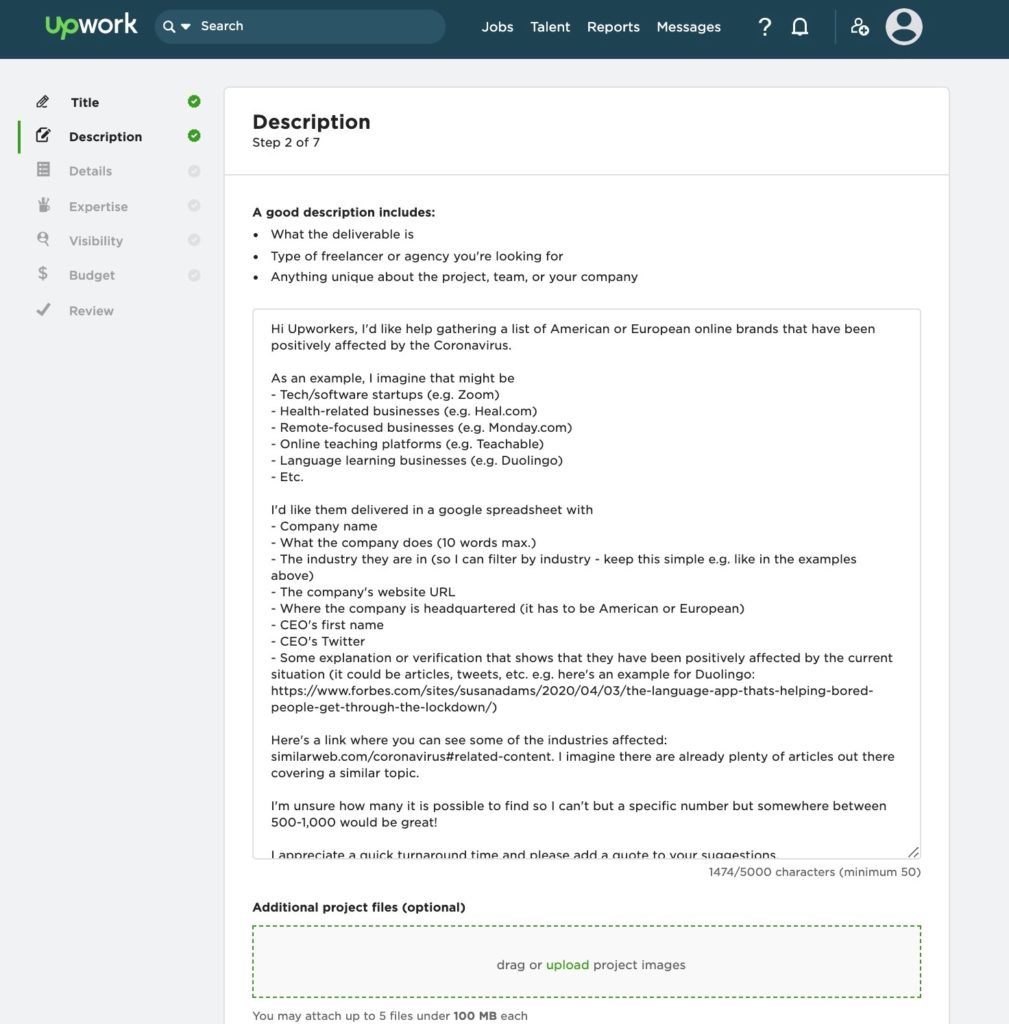
Let’s make this a one-time project and move on.

There are so many different skills we can attach to the project. It feels as if there are too many to choose from, so let’s just pick quantitative research and move on.

On the same page we also have to pick some skills. It is unclear what this is for, so let’s stick with market research and data entry.
We also need to share what level of experience the freelancer should have. It’s difficult to judge, so let’s pick the one in the middle. It’s probably a nice balance.
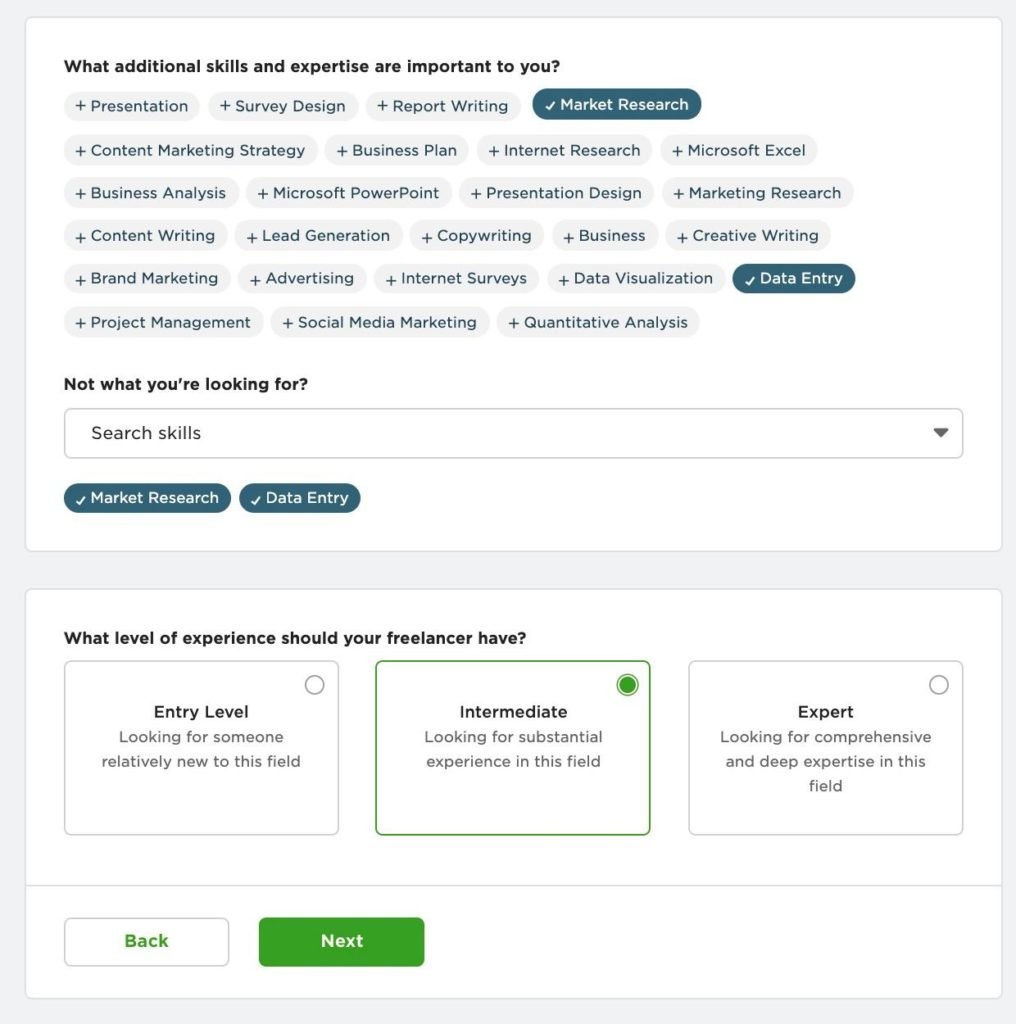
Next, we have to select if we only want to invite a specific freelancer or make it public, and how many freelancers we need. One freelancer will do for this project. Let’s keep it open and get some bids so the freelancers can show us what they got, shall we?

Finally, it seems, we have to enter the budget. A fixed price seems like a good bet but I don’t know how much this is worth. Especially, since we don’t yet know how many leads are out there and we want to pay what’s fair without getting ripped off.
Let’s say $1 per lead and add $200. Perhaps we are able to change it later.
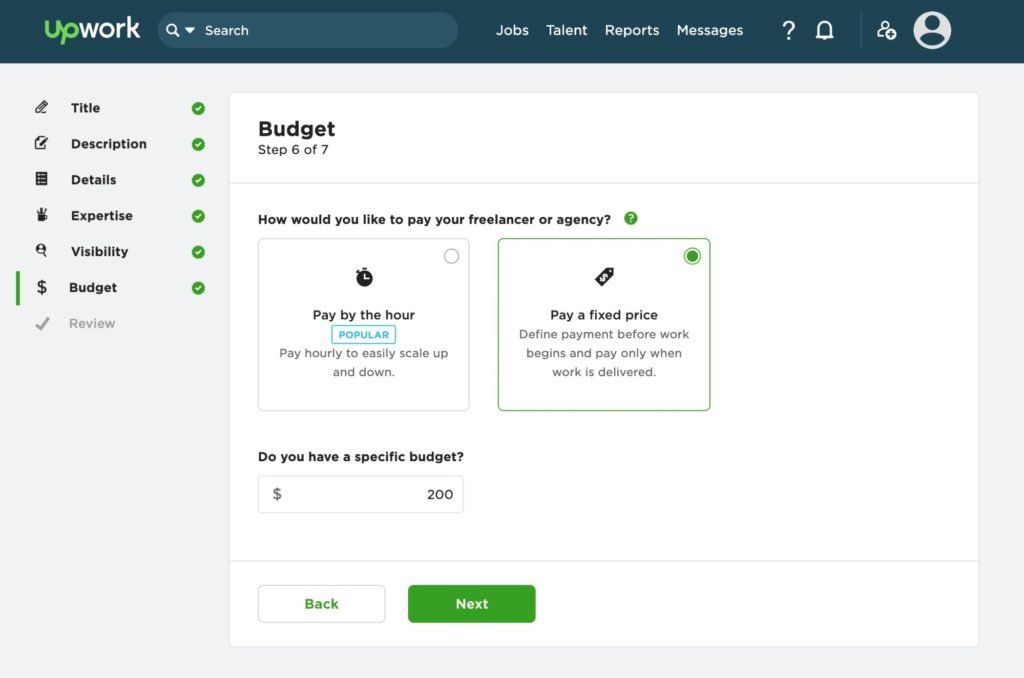
A quick review of our details and we are off to the races.
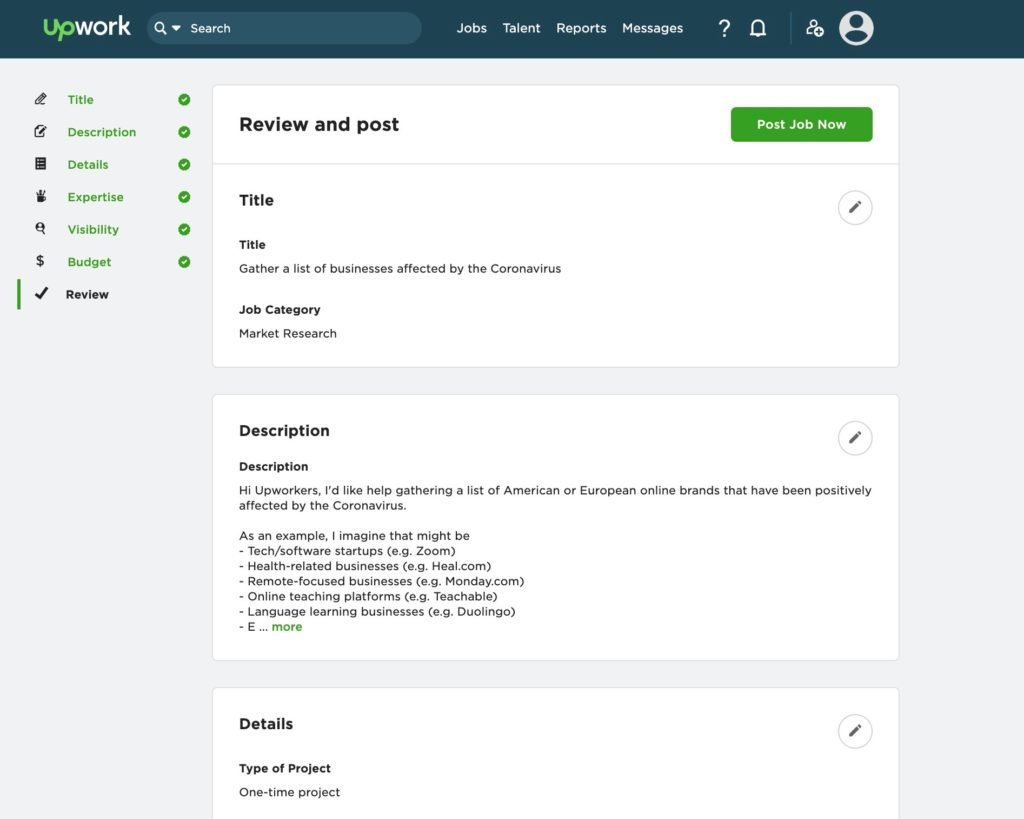
Yay! Our project is live! We are taken to this page and suggested to invite freelancers but since we don’t know any, we’ll let the freelancers come to us with proposals.
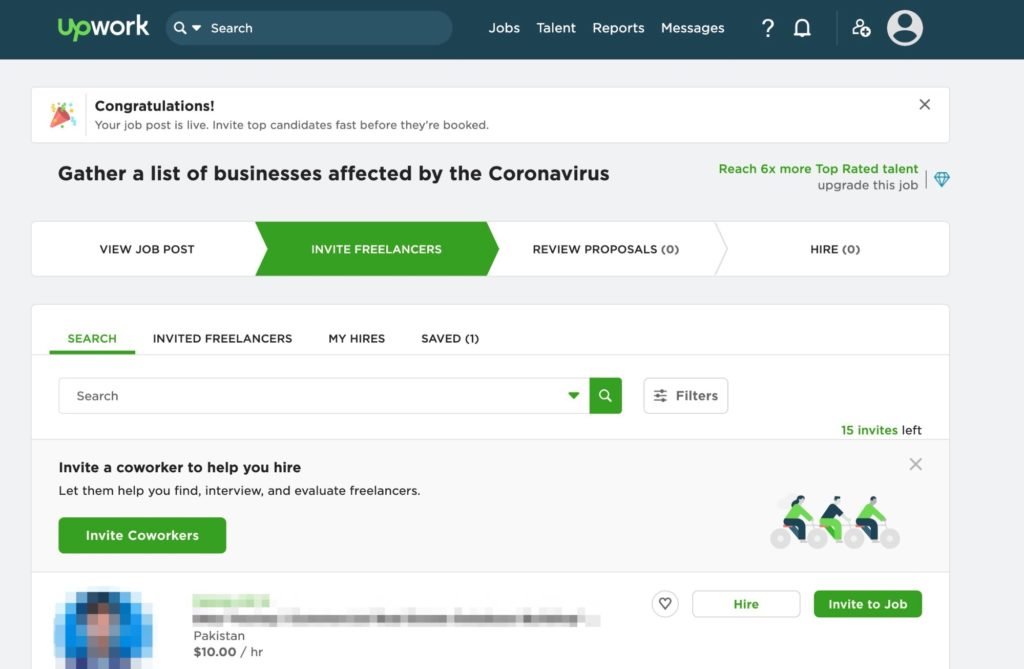
Fast forward two days… Let’s see if we got any proposals.
..We did! We got 20 proposals. This is what it looks like when we browse through the proposals:
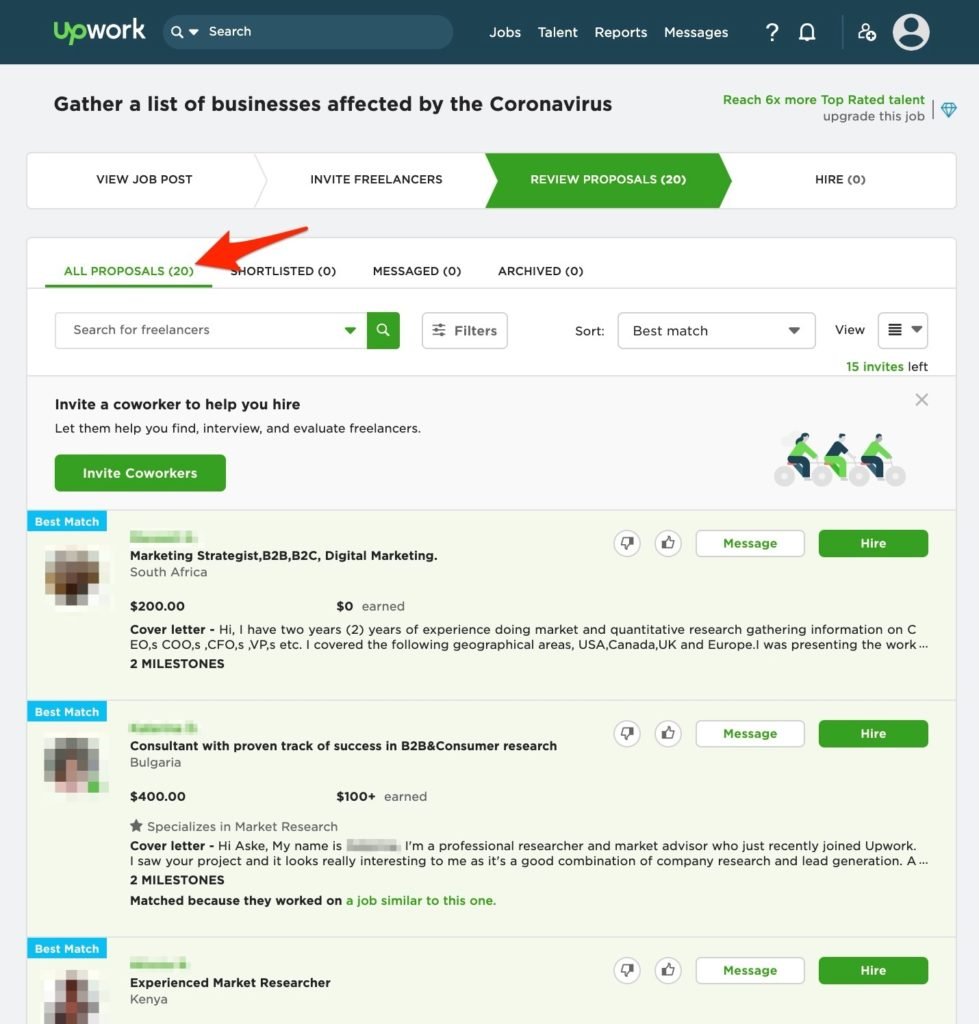
Somehow Upwork has decided for us that 14 out of the 20 options are the “best match”. Let’s take a look. I have blurred out any personal details out of respect for each freelancers’ privacy.

Let’s look at the other proposals…

Wow, this is a long proposal. Interesting. The freelancer found and included my name which is great.
This next proposal is long, so I had to bite it up into two screenshots.
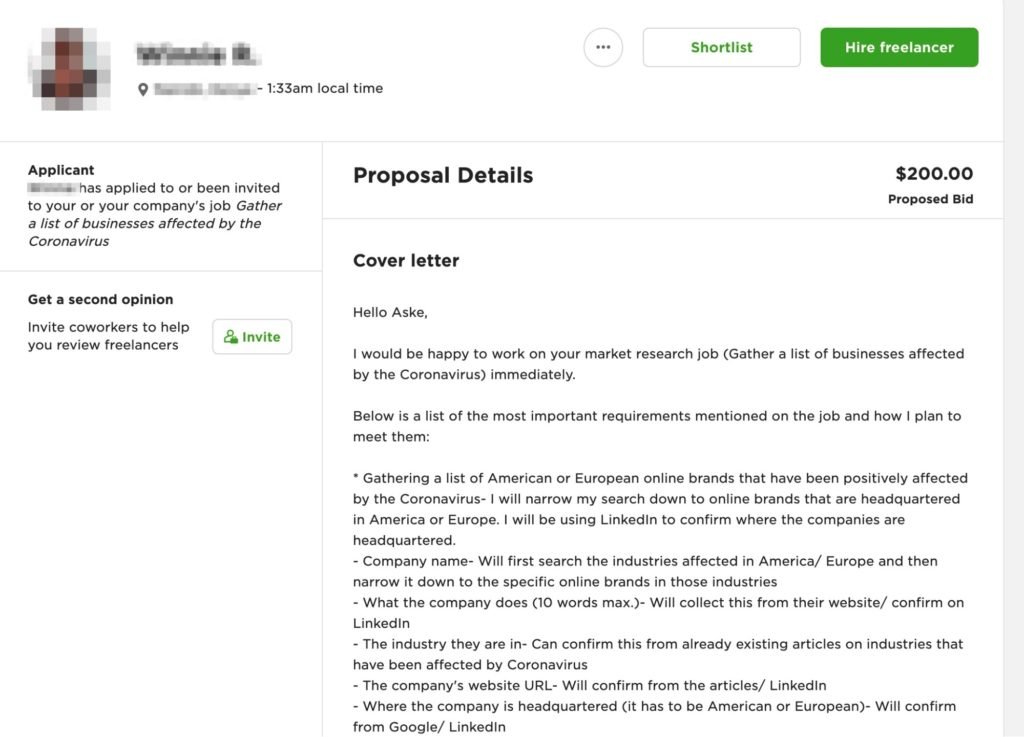
Besides the fact that this is very long and a good chunk of it feels like rewording of the project description, this isn’t bad either. The freelancer has a few questions and has thought about the project along with specifics that we will receive as a client. Not bad at all.

This next one has attached an example from a similar project. For privacy of the people in the doc, I’ll not add it here but the formatting looks like what you and I are looking for.
The proposal is nice, short and not bad at all. Let’s see what else we have.
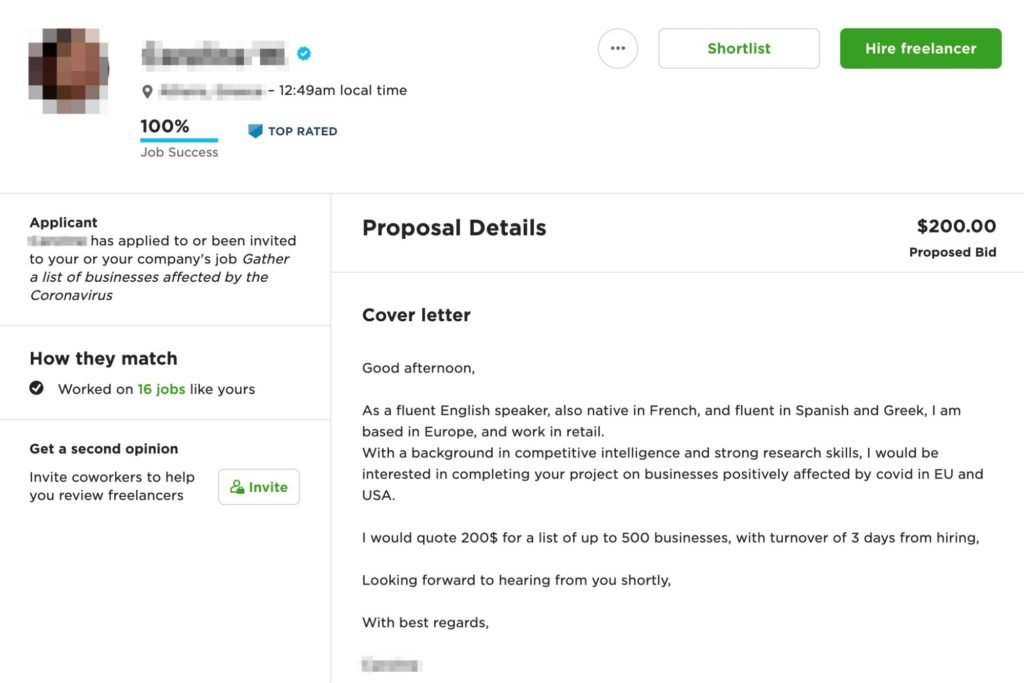
I’m not entirely sure how the language skills help with the project. Are you? Anyway, let’s not sit and think about how it might, with all the cover letters we have to go through.
We are busy and this is just one task out of many that we have to do as a client running a business. It’s one of those cases where it would be great if the freelancer had explained how it could help the project.
The rest of the proposals are quite similar… except for these two:
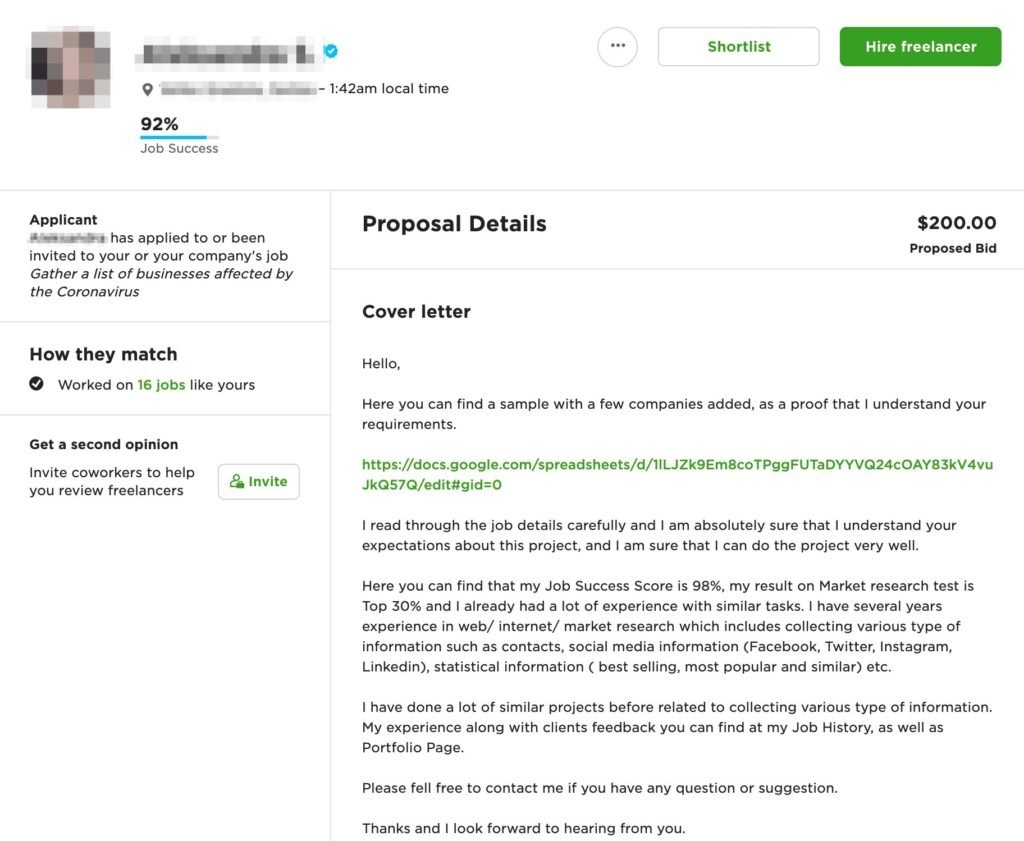
Nice! Look at this doc:

The freelancer showed a sample of what our project would look like. There were only one other candidate that did the same thing:

The proposal itself doesn’t feel that relevant to the project but based on the sample below it feels as if the freelancer understands what we are looking for. Right?

There are plenty more, similar, proposals. Since you are busy and don’t have all day to look at this (just like clients don’t), let’s leave it with those highlights.
Looking over these proposals, what do you notice?
I notice a few things:
We got a few different “categories” of proposals:
- The “hail mary” copy-paste proposal that isn’t really relevant
- The ones that tried to explain how their experience was relevant
- The ones that showed us what the project would look like when it is completed
As a client it feels easier to judge if someone is the right fit by showing us something rather than telling us about their background.
Particularly, because it is hard to trust that we are on the same page — even if someone says they understand, I’ve worked in outsourcing and remote projects for long enough to know that just saying someone understands is no guarantee that the two parties are on the same page.
Communicating between client and freelancer, and being on the same page is the biggest challenge with outsourcing, so it is extra important that even if we feel we understand, that we also work to make the client feel that we understand because there is a high chance we are not on the same page.
Especially, clients experienced at hiring will be concerned about this and we’ll look experienced and score some easy points by pointing out that we know this is a problem and work to mitigate it. Telling something is easy – I can tell you that I know how to build a new Facebook but why would you believe me? Saying stuff is easy.. Especially on the internet.
It is really challenging to make the solution attractive based on explaining ourselves compared to showing the sample as a few of the freelancers did. There is something to the visual aspect.
At this point in the hiring process, we haven’t even looked at pricing, the Job Success Score, testimonials, top rated-badges or anything like that.
It didn’t even cross my mind since we first need to make sure that we are getting what we are looking for and we got that proven from two people.
Almost all of the proposals were focused on the freelancer writing it rather than the project and the client. The irony is that I wouldn’t have thought about their background much if they haven’t focused so much on highlighting it.
And guess what: just as the freelancer is thinking about themselves, we as the client is doing the same. Everyone is and it’s normal. I don’t really care about their background, just whether they can do the project well or not.
Since most of the freelancer competition thinks about themselves, if we do the opposite, we’ll stand out immediately.
Another thing that I noticed in the proposals is that I didn’t feel any personal connection. I know this isn’t obvious but I would have loved to see a more personal or friendly way of writing the proposals. Most of the proposals felt very formal and in some cases even formulaic.
Even though freelancers are able to see how many proposals have been submitted, no one seemed to comment or mitigate the fact that there were a lot of competing freelancers for the same project.
Many of the proposals would have been decent or perhaps even gotten a shot if there weren’t any other proposals… but there were.
Since we can only hire one freelancer for the project, it’s a winner takes all scenario so if someone would make it 10% better, they would probably win.
With a lot of proposals and little time (being a busy client), it can feel overwhelming to look through many proposals and none of the freelancers seemed to consider that — and even if they did, we don’t know what they are thinking if they don’t share it with us. It doesn’t feel fair as a freelancer, I agree, but it is the world we live in and I’ve seen clients feel this way so many times.
I’m pleasantly surprised that there are more customized proposals whereas in the past, I’ve seen that most of the proposals have been lazy and irrelevant copy-paste cover letters.
Experienced clients see right through the template proposals, especially since there are many other proposals to compare with.
If we take the time to write even a basic custom proposal, we move from the worst bracket and into the middle bracket (in the three proposal brackets we talked about earlier) that might be considered for the project depending on the competition.
The challenge is that in most cases there can be only one winning freelancer, so we need to be the best. Luckily, it often isn’t that challenging.
Now, with a basic perspective of how it feels to be on the client side, let’s look at what good proposals look like and how we can create our own.
But first, let’s look at why we keep sending the same proposals even if they don’t land us any jobs and how clients are pitched by other freelancers outside of Upwork compared to on the website so we have a basic reference point.
Why we keep sending proposals that don’t land jobs
We’ve all tried doing something that doesn’t work like sending out proposals that doesn’t land clients. After sending out a bunch of similar ones and not hearing back, why do we keep applying in the same way even though we know it probably won’t work?
Or in other words, why do we keep doing the same thing yet expect a different result?
This quote is often signed as said by Einstein but that doesn’t seem to be true: “The definition of insanity is doing the same thing over and over again and expecting a different result.”
Either way, the point is great.
For some of us it is because we feel like we are working even though we know that working and making progress is not the same thing.
We are used to focusing on the number of hours we work from our traditional job but here on Upwork/with freelancing, we win by focusing on impact.
To mitigate it, we can for example create a habit around having a “doctor’s appointment” where we go undisturbed to dive deeper into the project for a little bit.
This requires reframing since we are used to clock in and out of jobs for a long time, and so this will naturally take a while to change.
This is one of the most powerful life lessons I’ve learned from freelancing and ironically, working in a traditional job, modern bosses tend to love this since it moves their business forward. Clocking in and out is just a metric created to hopefully help drive an impact on the bottom line but it isn’t a very good fit for that.
Examples of winning cover letters on Upwork
An Upwork proposal is different from what clients normally consider a proposal. On Upwork, this is the first impression the client gets of us whereas outside of Upwork, the proposal is usually the final recap of a potential project.
This graphic can serve as a summary:
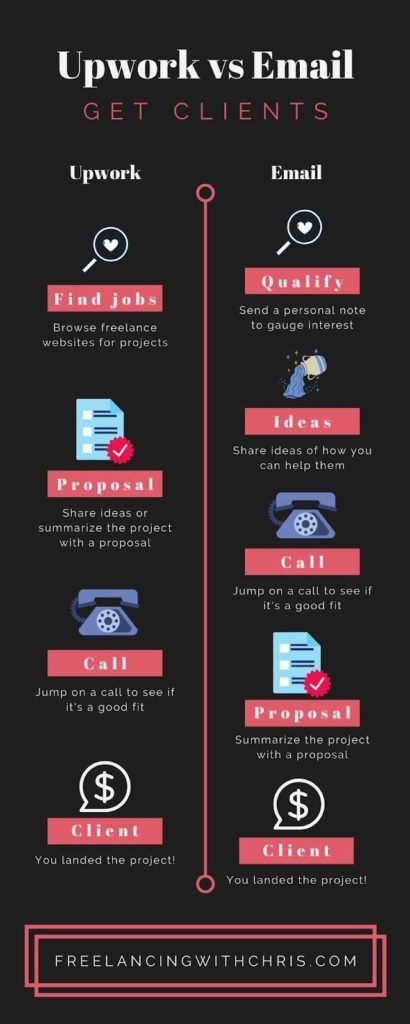
As you’ll see, we’ll normally have had the opportunity to establish that we are good at what we do, discuss a specific project, and perhaps even flesh out the details. On Upwork, it is the other way around.
An Upwork proposal consists of a cover letter and sometimes additional questions, although the word “cover letter” is sometimes used interchangeably with “proposal”.
So what does a good Upwork proposal look like? Let’s dig in by first look at a few example proposals that won the project they were pitching for!
Upwork cover letter examples
The job description

The Upwork cover letter

The project was won at $35/h.
Another example. The project description:

Won at $250.

The cover letter:
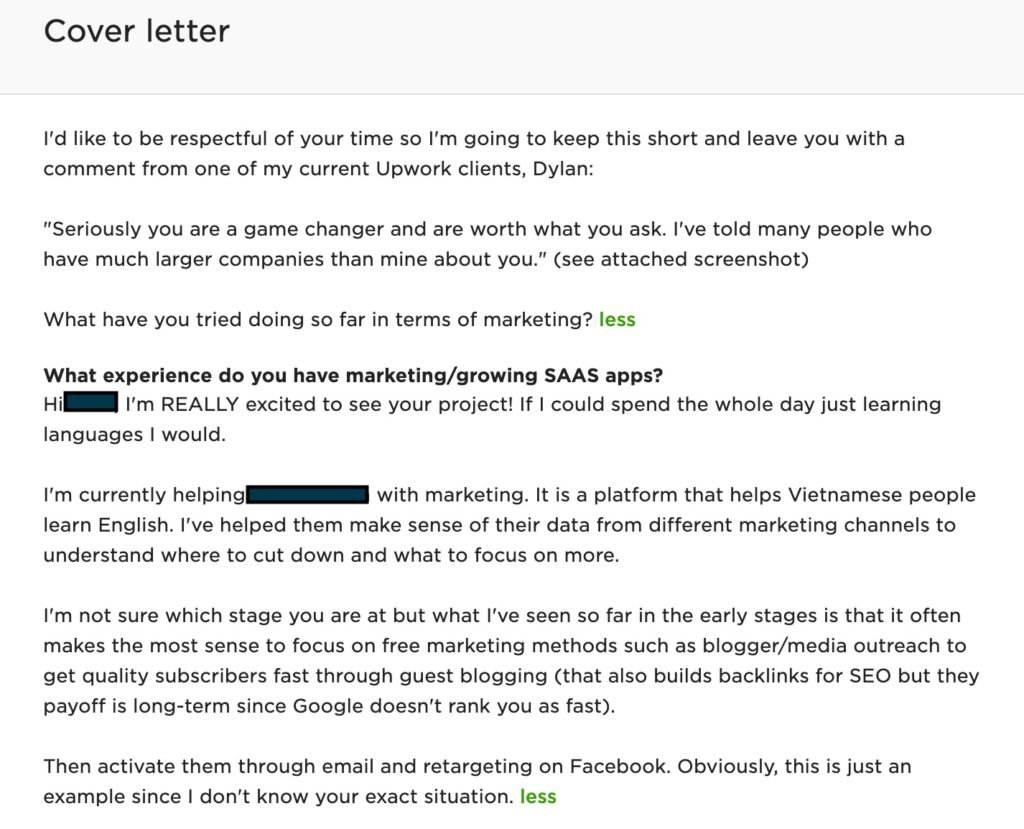
The Upwork cover letter:

Why did these Upwork cover letters work?
Let’s see which insights we can extract from the cover letters. What do you notice?
I notice that the proposals feel custom written to each of the projects — they show that the freelancer took the time to get to know the client and project before applying. There are some minor mistakes here and there. They are not perfect and that’s OK too.
The cover letters are SPECIFIC both in terms of addressing the project but also the freelancers’ background. They comment specifically on the project or business showing that they did their research.
I also notice that they often point out a specific unknown in the project that the client might not have thought about. Something that is needed in order to give accurate advice or price.
They take one of the following approaches (or both): friendly with genuine interest or focus on being the expert.
They are not trying to be the expert by writing a long essay about their experience, in fact, they tend to have only a small section about the freelancers’ expertise or background.
And finally, they end with a CTA to make the conversation and next steps easier for the client.
Other insights I’ve noticed are:
- The human aspect is more important than we think. I’ve earned a lot by being friendly, thoughtful of the client’s time, and focused on what they wanted – not always what I thought was best
- Showcasing our expertise and portfolio is important. Just not as always much as we like to think.
Next, let’s dive into how to apply these insights in our own Upwork cover letters.

Step by step guide to writing Upwork cover letters that win projects
A quick note before we begin. Since I’ve covered most of the frequent Upwork cover letter questions more in detail separately, I will not be diving into them here but I here are the links to each of them in case you need to dive in:
- Why do you think you are a good fit for this particular project?
- Do you have suggestions to make this project run successfully?
- What part of this project most appeals to you?
Let’s put everything we’ve learned together into the three key sections in the proposal:
Step 1: The hook
Direct response copywriting is the art of writing copy that persuades people to do certain things — usually buy a product.
That rule is that the headline only has one purpose: to get the reader to write the first paragraph. And the first paragraph only has one purpose: to get the reader to read the second paragraph.
You get the gist. When we apply for Upwork jobs with many proposals that are already submitted, this is particularly important, since it is easy to be lost in the sea of other proposals as we saw earlier.
The first few paragraphs have one purpose, to get the client to open the proposal in first place. That’s it!
We can do that by addressing the client by name to instantly show that we are not wasting their time. Experienced Upwork clients are used to shitty and irrelevant proposals, so this is a good way to signal right from the get go that we are not one of those.
We can use the first few lines to write something that hooks them in since they can see that in their dashboard without opening the proposal. For example a compliment about the project or how we have similar experience.
For example “Hi NAME, I’m excited to see that you are also working in the language learning industry. I’ve helped a number of similar businesses drive customers with Facebook ads.”
Or “Hi NAME, I got excited when I saw your project about helping language students. I’ve learned two languages on my own and the most common challenge I see with students is that they are afraid of practicing because they don’t want to look stupid.”
You will often be able to find the name of the client in previous project descriptions or in the testimonials from previous projects.
Step 2: The meat
All other things being equal, this is the most important part of the proposal: We’ll show the client why we are relevant for the project.
We can do that in a few different ways. For example by showing what we’ve done in the past but instead of showing our entire portfolio or work history, we’ll highlight just a few examples that are relevant to the project.
That way, the busy client can quickly understand why we are relevant instead of looking at our life story and trying to guess it themselves. This is extra work and it is hard, and that’s why the client doesn’t do it. Most freelancers don’t do it either and so if we do, it’s so much easier to win the project.
For example “ As I understand you are looking for help running Facebook ads to drive more customers. I’ve helped a number of businesses similar to yours, one was teaching German and another Spanish.
By experimenting with different images, text, and audiences, I optimized the campaign from getting customers at $9/customer to $1/customer. There are many things to test but I’ve found that just focusing on the two that make a big difference will give the most bang for your buck. It would be great to speak with you to understand what you’ve already tried and how it went.”
If you don’t feel like you have perfectly related experience, highlight a project and show how one part of it is relevant. If the customers have been the same, you might highlight the pain points and show that you understand that type of customer well.
For example, if the project is for a business selling bathroom utilities like this one:
We might say: “ I helped another client in the bathroom utility industry generate leads with online marketing. We tested out three different channels: SEO, Linked ads, and Google search ads. LinkedIn was decent yet expensive. We built a great combo between different channels that I think you’ll find attractive.
Even though the items sold were slightly different, they were in a similar industry so there is likely overlap with the buying decision between their customers and yours.
With another client that sells portable gear for events, I’ve helped build a short term funnel with ads to get client leads quickly and a long-term approach with organic search traffic.
I figure your business is likely selling to event owners and in the second example my client was doing the same yet selling different gear.”
Do you remember the two best proposals we saw for the project we put on Upwork earlier? Showing samples as they did is another great approach to the “meat”-section of the proposal if we can show exactly what the project will look like.
This is particularly great if you feel as if you don’t have any relevant experience because we move the focus to what the project will look like.
We can expand this by walking the client through the process as well. This is also where we mitigate hidden client questions.
Common questions that are often not shared in the project description and overlooked are:
- If there are changes/revisions during the project, will we, as the freelancer, disappear?
- Will we be easy to work with or does the busy client have to learn something new e.g. software?
We can mitigate that by for example detailing how communication might look like throughout the project e.g. if they will get weekly updates or a quick response time.
Long-time readers of the blog will not be surprised: this is where putting in the extra effort upfront pays off.
However, I have noticed that even if something isn’t perfect, clients tend to love to see that we put in the effort because it doesn’t happen often. Modern business owners switch more and more from focusing on a specific skill set when hiring and instead, towards attitude and mindset because skills are easier to teach.
We can show that by briefly explaining our thoughts behind what we are showing them and if relevant, the thought process behind it.
For example if a job description is showing how a client want to run Facebook ads but doesn’t mention the project, we might explain that in order to recommend the best strategy we’d need to know more about the product and industry.
We might also show an example of how it changes depending on the price of the product e.g. that when a product cost more, a longer funnel/more time is needed in order to persuade the buyer.
Step 3: the close
This section is easy and focuses on next steps. Write a paragraph or two about the portfolio pieces or testimonials you have attached – don’t just attach things and let the busy client guess what it is.
Then conclude with one question so the client knows what to do next. I like to suggest a phone call to learn more but if you aren’t sure if you can help the client yet, you might ask a simple question about their business such as which industry they are in or about the products they sell.
For example, “I’d like to keep this short to respect your time. I have attached a few testimonials from previous projects, in case you are curious. Out of interest, what are your most popular products and what price point do they sell at?”
There is no real formula and it is more art than science as long as you add the key components and answer the questions that the client is looking to get answered. They might be described directly in the job description as well as those hidden questions we discussed before.
The client wants to know how we can help them and the more specific we are in showing them that, the easier it is to understand why they should work with us.
Portfolio, Upwork profile text, Job Success Score, etc. are all ways to show that and help the client “outsource ” the decision.
We can either help them outsource the deciding by having them think “if this freelancer worked on x project or with y client brand that I like, they can probably help me as well”, or we can go ahead and show them directly how their project will look and what it feels like to work together with us through showing the process.
For example, if there is a big timezone difference we might realize that they could be concerned about it and instead of leaving it up to chance we can address it right away — which also shows that we thought about the client and how they might feel.
We might tell them that the time zone difference is actually a benefit because they can wake up to a project update in their inbox since we can work on their project while they are asleep because of the time zone difference.
Notice how much we dive into how the client feels. That is not random. Clients often hire freelancers based on emotions even though most of us like to think that it is a logical decision.
Remember, your proposal doesn’t need to be the best in the world, it just needs to be better than the other applicants.
How to win projects if you have no experience?
You and I have already discussed this earlier in the guide and the overarching idea is to win by showing that we put in a lot of effort. We can also make it easier by picking an idea that can be done without crazy technical knowledge like leads research.
The most common approaches to show your attitude is to:
- Show a sample of how the project will be done
- Help the client visualize what the project looks like when it is complete and how the collaboration (incl. communication) will work throughout the project so they know what to expect
- Show that you’ve worked hard to understand the client by including small details that indicate you’ve done your homework instead of writing a long essay
How to write cover letters fast with templates
I don’t recommend using this section until you’ve landed plenty of clients and feel confident that when you send out a certain number of cover letters, you know you’ll land a client.
Only then does it make sense to optimize the process. Otherwise we are optimizing the wrong thing and not gaining anything.
That being said, the simplest way to go about it is to categorize the clients you’ve worked with into certain buckets depending on what type of job descriptions they use and then collect all the winning proposals for each of those job description types.
Next, mix and match each of the proposal sections for new proposals like a swipe file. For example, you might use half of the meat section from one proposal, another half from another proposal and the closing section from a third proposal.
The key here is to only use winning proposals since you know that they work. It makes sense to experiment with a few things here and there to develop new ideas as well. That works particularly well if you can reuse some proven sections of your old proposals.
Post navigation
Previous post.

No comments yet. Why don’t you start the discussion?
Leave a Reply Cancel reply
Your email address will not be published. Required fields are marked *
Save my name, email, and website in this browser for the next time I comment.
Privacy Overview

An Upwork Cover Letter Example For Freelancers
So, you’ve decided to join Upwork or a similar freelance marketplace. That’s a great idea! The gig economy is booming and the compensation reflects that. Freelancers providing skilled services tend to earn 70% more per hour than their cubicle-dwelling counterparts.
But, you have to be mindful of competition too. As many as 57 million workers in the US alone freelance part-time and full-time. And Upwork has some 12 million registered users. Thus, to get your piece of the pie, you really need to make Upwork ‘work’ for you.
That starts with having a well-optimized personal profile and learning to write great bidding letters for projects. This post offers some tips for that. Plus, we’ve included a quick Upwork cover letter sample you can use as a reference. Keep in mind that this post will mostly reference Upwork, but could really apply to any freelancing platform.
Start With Optimizing Your Profile
You can bet that anyone interested in your proposal is going to check out the information in your profile before they even consider you for the job. So be sure that your profile includes the following:
- A rockstar profile title that summarizes what you do.
- Crisp and professional profile picture
- Detailed profile overview that explains your professional background and highlights your skills.
You can also spice it up with testimonials/quotes from your past clients and portfolio pieces. Lastly, add extra credibility by completing several competency tests.

Be Specific in Your Proposals
In most cases, you will be applying to do a very short-term, very specific task. In your cover letter (project proposal) don’t go around the bush too much and succinctly state what makes you a good fit for that job. Include your resume only if the job posting specifically instructs you to do so.
Here’s a quick example to illustrate the point further: imagine you’re a freelance graphic designer . If you apply for a gig to design a set of landing pages, don’t waste time discussing any other skills or experience (e.g. your amazing illustration talents). Instead, write only about your experience with landing page design and perhaps conversion optimization.
Speak in Terms of The Clients Needs
Keep in mind that many of the jobs posted on Upwork are time-critical. The person who needs the work done likely has little time to train someone, or even provide a bunch of clarification. That’s why a person who can say something like: “Look, I understand what you want. Here is how I will do it. It will be done quickly. I’m ready to start immediately.’ is going to earn a second look.
To help build even more confidence in your abilities, consider including a testimonial or reference from another client. If you can show that you’ve completed similar work in the past, that will work in your favor too!
Focus on Skills, Not Personality
Normally, your cover letter is the perfect vehicle to show your enthusiasm for the company mission, and that you will fit in with the company culture. Here, none of that matters. So keep the focus on your skills and experience, not personality traits.
Answer Their Questions
Sometimes, a potential client will post a pretty detailed list of questions they want to be answered, and information that they want you to provide. On one hand, that makes it much easier for you to write the cover letter. You simply answer the questions they provide. On the other hand, if you miss anything, it could get your entire proposal eliminated from consideration. So pay attention!
Cover Letter Sample For Upwork in .docx Format
Here is a sample cover letter that you can submit in response to a short-term project on Upwork.
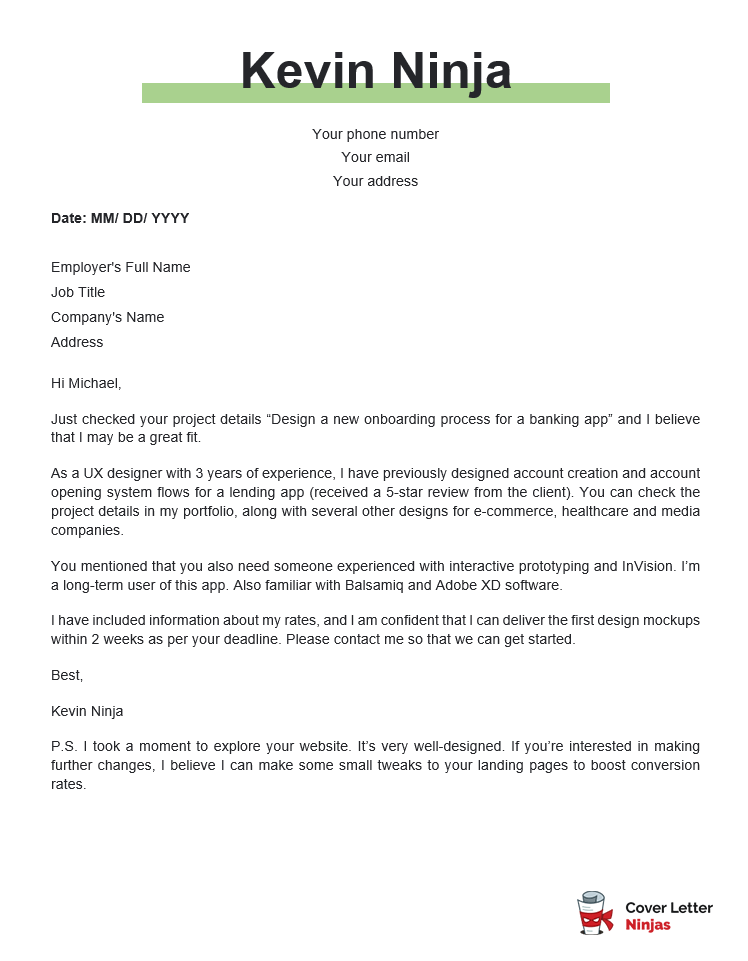
Download example (Word version)
Upwork Cover Letter Example – Text Format
Hi Michael,
Just checked your project details “Design a new onboarding process for a banking app” and I believe that I may be a great fit.
As a UX designer with 3 years of experience, I have previously designed account creation and account opening system flows for a lending app (received a 5-star review from the client). You can check the project details in my portfolio, along with several other designs for e-commerce, healthcare and media companies.
You mentioned that you also need someone experienced with interactive prototyping and InVision. I’m a long-term user of this app. Also familiar with Balsamiq and Adobe XD software.
I have included information about my rates, and I am confident that I can deliver the first design mockups within 2 weeks as per your deadline. Please contact me so that we can get started.
Kevin Ninja
P.S. I took a moment to explore your website. It’s very well-designed. If you’re interested in making further changes, I believe I can make some small tweaks to your landing pages to boost conversion rates.
Final Tip: Sell a Bit Further
Treat your cover letter as a marketing document. Work mostly to sell your clients on the skills they need right now, but don’t forget to sell yourself a bit as well. Slip in a postscript or ‘aside’ to let them know other ways in which you can help!
Discover Even More Releveant Cover Letter Examples!
- Web developer cover letter example
- QA cover letter example
- Virtual assistant cover letter example
- Email cover letter example
Other Cover Letter Samples
Sample cover letter to recruitment agency, a quick qa tester cover letter example, customer success cover letter example, interesting interior design cover letter example.
A huge collection of cover letters created by a ninja team of writers and career advisors. Learn how to write, style and file cover letters that employers actually enjoy reading.
© Copyright 2023 Cover Letter Ninjas
- Privacy Policy
- Cookie Policy
- Terms and Conditions
- Disclosure Policy
- Terms And Conditions
- Privacy Policy
- Editorial Policy
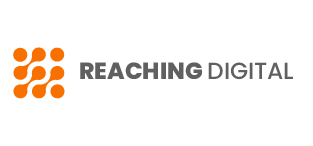
Home » Cover Letter for Upwork: 08 Samples & Template
Cover Letter for Upwork: 08 Samples & Template
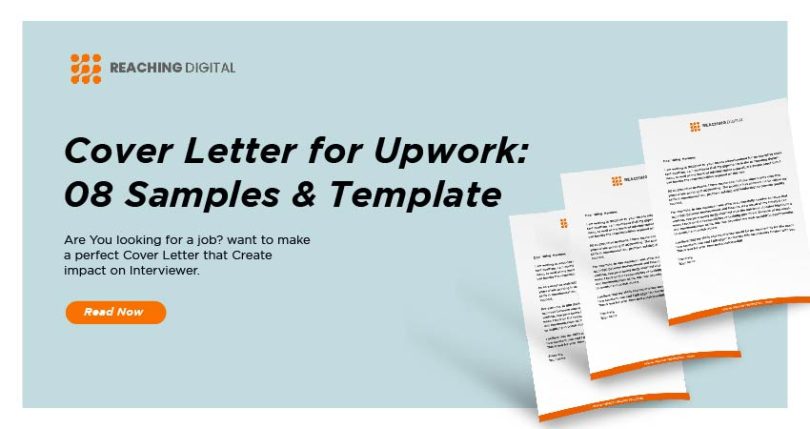
Do you need a cover letter for your Upwork profile? You’re in luck! I’m going to share with you my tips for writing an effective cover letter that will help you stand out from the competition. So, are you ready to learn how to write a cover letter that will WOW potential clients? Keep reading. Are you looking for a way to spice up your resume and stand out from the competition?
Check out this guide on how to write an effective cover letter for Upwork! also We’ll provide tips on what to include in your letter and how to make sure it catches the hiring manager’s attention. So whether you’re a beginner or experienced freelancer, read on for some helpful advice! Upwork is a great platform for finding freelance work, but it can be tough to stand out from the crowd. That’s where your cover letter comes in. A well-written cover letter can make all the difference and help you land your dream job. But, what makes a good cover letter? And, most important, how do you write one? Don’t worry – I’m going to show
Are you looking for a job? Check out this cover letter template for Upwork! This guide will show you how to write a cover letter that will stand out from the crowd. Are you looking for a job, but don’t know how to start? Upwork is a great way to get started. In this blog post, we’ll go over how to write a cover letter for Upwork. We’ll also give you some tips on what to include in your resume. Let’s get started. With this template, you can create a powerful and professional cover letter that will help you get the job you want. So why wait? Start creating your perfect cover letter today!
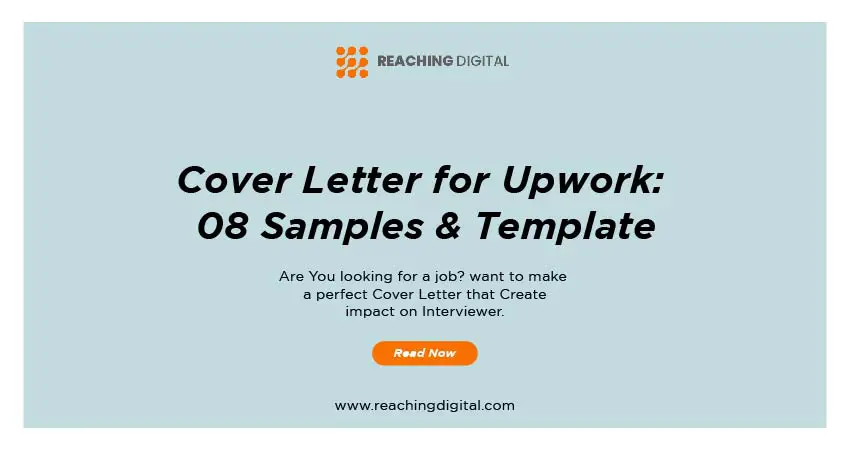
Table of Contents
Upwork Cover Letter sample for graphic designer
Dear Hiring Manager,
I am delighted to be able to apply for the Graphic Designer position with your company. Having done my research, I believe that you are looking for someone who has strong graphic design skills to create layout and design ads. If hired, I will bring this experience and more to the role.
Let me tell you why I would like to join your team as a graphic designer. I have very good communication skills and I can work well with others, but my creativity is outstanding. As a graphic designer, the projects that you will be able to see me complete for this position will speak volumes of that statement.
My experience includes:
- Creative design solutions that attract attention and convey the intended message
- Designing marketing materials such as brochures and posters
- Proficient with Adobe CS5 program suite (InDesign, Photoshop, Illustrator)
Ready to discuss my qualifications at any time. I look forward to speaking with you soon and hope that we will meet again soon.
Your sincerely,
Sample Cover Letter for Upwork Data Entry
Dear Sir/Madam,
I am writing this letter to express my interest in the opening position for Data Entry Specialist. I believe that my experience and background will make me a good candidate for this job. Thank you very much for your time and consideration.
While completing my degree at XYZ, I picked up several new skills that are essential to successful data entry projects. I can learn new programs quickly and efficiently. I’m also good at troubleshooting software problems, which is very important for this job.
I am looking forward to interviewing with you soon. Please call me on 555-555-5555 or send me an email at [email protected] if you have any questions about my candidacy. I will contact you next week for an interview on Tuesday or Thursday afternoon.
Thank you again for your time and consideration, Mr./Mrs. Employer.
Best regards,
YOUR NAME HERE
Cover letter for Upwork Graphic Designer
I’m a graduate of the University of Texas at Austin with a degree in graphic design. My experience includes both print and digital mediums, ranging from banners to website design. I have also worked on several large-scale projects including creating presentations for businesses and event signage. In addition to my graphic design skills, I am an effective communicator with strong research and writing skills. My background in graphic design makes me a great candidate for the following position at your company.
As seen on my resume, I have extensive experience working in print mediums. This includes work with large-scale banners, logos, business cards, flyers, postcards, posters , brochures among others. My work has been used by several companies across the country, including New York City. As seen on my resume, I also have experience with digital mediums. This includes work with web design, social media presence and video editing.
I’m an effective communicator who works well in both groups and independently. I take direction very well, but can also work without supervision. My background in graphic design makes me an ideal candidate for the position advertised on your website at (website address) . So please contact me if you would like more information or if you have any questions. Thank you for your time and consideration.
Please feel free to contact me at ( phone number ) or via email to set up a brief interview. I look forward to hearing from you soon!
Sincerely, Your Name
Upwork Cover letter Sample for Data entry
I have been doing data entry for a number of years now and I am going to apply for this job with _________. I believe that my experience in the industry would help me climb up the ladder in your company. If you want, we can set up a meeting so I can show you how productive I am when it comes to typing projects. Also I am experienced in all kinds of data entry tasks be it simple or complex.
I can start immediately and will deliver your project on time. And I guarantee great quality work every time. Therefore, you can trust me to work on a confidential basis and not disclose any private information about your company or the details of the projects that you give me.
Do get back to me if this position is still open and if you want to schedule a meeting. I am looking forward to working with you.
Best regards, Name
Sample Upwork Cover Letter for Virtual Assistant
Respected Sir,
I have been looking for a job as a virtual assistant. So I came across your advertisement on LinkedIn and felt it would be something that I could do to help you with your company’s work. Below is my resume.
In addition, please find attached my cover letter which will give you a brief idea regarding my education, experience and skills.
I would love to have an opportunity to speak with you further about how I can help your company. I am available for the next two weeks if you wish to contact me before then. Thank You,
Upwork Proposal Sample for Graphic Designer
Your company recently posted a Project Request on Upwork.com, and we would like to take this opportunity to introduce you to our graphic design studio. After having carefully viewed the project request and its requirements, also we believe that our professional services can be of assistance to your business. We welcome the opportunity to submit an Upwork Proposal.
In the attached proposal, we have highlighted our capabilities and competitive advantage within the graphic design industry. Please note that a detailed project plan is also provided as a separate document for your reference. We hope you find our proposal competitive and suitable for this assignment.
We would be happy to send more information on how we can assist your business. So please feel free to contact us by email at info@insert graphic design studio name here.com should you require additional information or clarification on any aspect of this proposal.
We look forward to working with you soon!
Sincerely, Insert Name | Graphic Designer | Company Name
So what do you think? Do you feel more confident in your ability to write an Upwork cover letter that will get you noticed? But always Remember, personalize each letter and make sure it is tailored to the specific job listing. And don’t forget to follow our tips for writing a strong opener, body, and closer. Finally, check out some of the best ways to follow up after submitting your application. So Let us know how it goes!
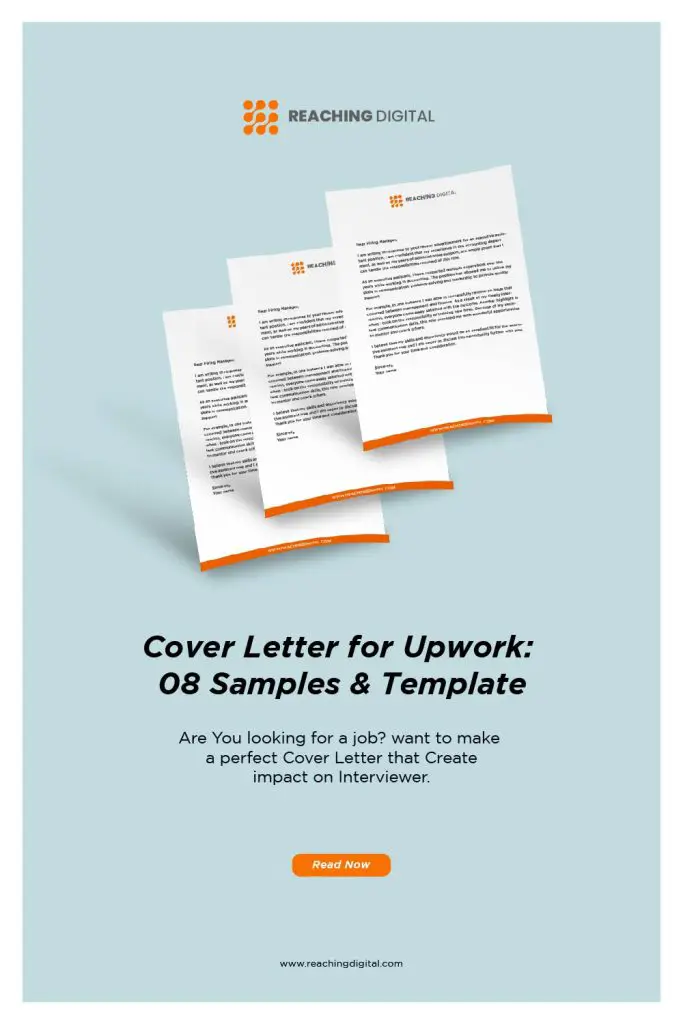
You may also like

Cover Letter for Ph.D. Application: 5 Template ideas
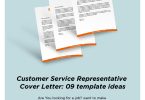
Customer Service Representative Cover Letter: 09...

Waitress Cover Letter: 07 Template Ideas

Computer Science Cover Letter: 05 Ready Template
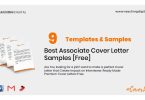
9 Best Associate Cover Letter Samples [Free]
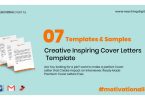
Creative Inspiring Cover Letters: 7+ Template
About the author.
Jessica William
Leave a comment x.
Save my name, email, and website in this browser for the next time I comment.
What is a Cover Letter in Upwork?
- July 19, 2023
- AI , Guide , upwork
Table of Contents
A cover letter in Upwork , also known as a proposal, is a personalized message sent to potential clients to express interest in their posted job. It is a freelancer’s opportunity to provide a brief introduction, highlight their qualifications, and explain why they are the ideal candidate for the job. Simply put, it’s a golden opportunity to make a killer first impression.
Why is a Cover Letter Important in Upwork?
Upwork, being the largest freelancer marketplace online, receives thousands of job posts daily. For a freelancer, standing out from the crowd is crucial. A well-crafted cover letter is the perfect tool to grab a potential client’s attention and make a lasting impression.
Your cover letter is your first, and possibly only chance to make a good impression.
It’s not just about showcasing your skills and experience. A cover letter is also a demonstration of your professionalism, communication skills, and overall suitability for a specific job.
Key Components of an Upwork Cover Letter
An effective Upwork cover letter should be concise, relevant, and tailored to the specific job you are applying for. Here are the key components:
- Personalized Greeting Addressing the client by name is a simple yet effective way to establish a personal connection. If the client’s name is not mentioned in the job posting, a bit of research might reveal it. This could involve looking at the client’s profile or reviews from past freelancers.
- Introduction and Expressing Interest Start by introducing yourself and expressing your interest in the job. Be sure to mention why the job appeals to you – this shows that you have read and understood the job description.
- Highlighting Relevant Skills and Experience This is where you showcase your qualifications and experience relevant to the job. Be specific and provide examples of your past work.
- Answering Any Additional Questions Many job postings on Upwork include additional questions. These are not optional – they are an integral part of the application process and should be answered thoughtfully and thoroughly.
- End with a Call to Action Conclude your letter with a strong call to action, encouraging the client to read your proposal or get in touch with you. PRO TIP: Be aware of potential scams on Upwork. Never submit work as part of a cover letter unless you are certain the client is legitimate.
Upwork Cover Letter Best Practices
Here are some best practices to keep in mind when writing an Upwork cover letter:
- Keep it Short and Sweet: A long, rambling cover letter is likely to lose a client’s interest. Aim for a concise, engaging letter that gets straight to the point.
- Use a Professional Tone: Remember, you’re not just a freelancer – you’re a business. Maintain a professional tone throughout your cover letter, avoiding slang or overly casual language.
- Proofread: Typos, grammar mistakes, or poor formatting can make a bad impression. Always proofread your cover letter before sending it.
- Personalize Each Letter: Avoid the temptation to use a generic, one-size-fits-all cover letter. Tailoring each letter to the specific job and client shows that you’ve put in the effort and are truly interested in the job.
- Highlight Your Value: Don’t just list your skills – explain how they can benefit the client. Provide specific examples of how you’ve used your skills to achieve results in the past.
Upwork Cover Letter Sample
What do you write on a cover letter? Here’s a sample of how an Upwork cover letter could look:
Hello [Client Name], I came across your job posting for [Job Title] and was immediately drawn to it. With my extensive experience in [Relevant Skills/Experience], I believe I can deliver the results you’re looking for. In my previous role as a [Previous Role], I [Provide a specific example of how you used your skills to achieve a positive outcome]. I look forward to the opportunity to bring these skills and experiences to your project. Please feel free to review my portfolio for samples of my work. I’m happy to discuss my qualifications further and look forward to hearing from you soon. Best regards, [Your Name] PRO TIP
Upwork and Upwex: A Winning Combination
Now that you understand the importance of a well-crafted cover letter on Upwork, you might be wondering how you can improve your chances of success. This is where Upwex comes in. Upwex is an AI-powered assistant that helps both new and seasoned freelancers generate cover letters. It’s an invaluable tool for working on Upwork, removing the guesswork from the process, and helping you make a great first impression.
Remember, your cover letter is your ticket to success on Upwork. It’s your chance to showcase your skills, demonstrate your professionalism, and convince potential clients that you’re the right freelancer for the job. So, make it count!
Advantages of Upwex
- Increased Efficiency: With AI, Upwex.io helps freelancers find high-paying projects, enhancing their productivity.
- Job Rating: Upwex.io analyses and ranks different jobs on Upwork, helping freelancers identify the most promising and high-paying projects.
- Proposal Generator: This feature simplifies the process of drafting and submitting proposals, saving time and effort.
- Answers to Technical Questions: Freelancers receive assistance in resolving technical issues, enhancing their skills and the quality of their work.
- Integration with Pipedrive CRM: This eases the process of customer relationship management and enhances interactions with them.
- Analytics and Reports: These features help freelancers track their work and analyze their efficiency, ultimately helping them increase their income.
Upwex User Cases:
- For the freelancer: Upwex.io aids freelancers in finding high-paying projects on Upwork faster and simplifies the process of making proposals. The answers to technical questions help freelancers improve the quality of their work.
- For the Lead Gen: Upwex.io can be beneficial for lead generation specialists, helping them identify promising jobs and potential clients. The integration with Pipedrive CRM simplifies the process of managing client relationships.
- For the Head of Sales: Upwex.io can be useful for heads of sales, assisting them in analyzing team performance, tracking projects, and managing client relationships with the help of integration with Pipedrive CRM. Analytical tools and reports assist in data-driven management and decision-making.
Frequently Asked Questions
How to write a cover letter with no experience.
Writing a cover letter with no experience involves highlighting transferable skills, showcasing your enthusiasm, and demonstrating your understanding of the job. Emphasize skills gained from other experiences like education or volunteering that can apply to the job. Lastly, tools like Upwex can guide you, offering AI-driven suggestions for effective proposals, even when starting from scratch.
What should I include in my cover letter?
In your cover letter, it’s crucial to include information about your skills, experience, and how they align with the job requirements. Provide context about your previous work, but don’t just list what you’ve done – explain how it brought value. Tailor your cover letter to each job post, addressing the client’s needs and showing you understand their project. Add a personal touch to show your enthusiasm and why you’re a good fit.
How long should my cover letter be?
The length of your cover letter should ideally be around 200-300 words, making it long enough to provide details about your skills and experiences, but concise enough to keep the reader’s attention. The key is to be succinct and informative without being excessively wordy.
How can I make my cover letter stand out?
To make your cover letter stand out, understand the client’s needs and show how your skills align with their project. Use clear and concise language. Engage the reader with a compelling introduction, provide solid evidence of your skills, and conclude with a strong closing statement. Show enthusiasm for the project and the value you can add.
Should I customize my cover letter for each job?
Yes, customizing your cover letter for each job is crucial. Clients want to know that you’ve read their job post thoroughly and understand their needs. Customizing your cover letter shows you’re invested in their project. It also enables you to specifically address how your skills and experiences align with their project requirements.
How do I address the client in my cover letter?
If you know the client’s name, use it to make your letter more personal. If not, a simple “Hello” or “Dear client” is fine. Avoid overly formal language, but keep a professional tone.
Should I include samples of my work in my cover letter?
Yes, including samples of your work in your cover letter can be beneficial. It provides tangible evidence of your skills. But rather than including every sample you have, select a few that are most relevant to the job post.
How do I showcase my skills and experience in my cover letter?
Don’t just list your skills and experience – show how they align with the job post. Use specific examples from your previous work to demonstrate your skills in action. Highlight measurable results and successes, and explain how they could benefit the client’s project.
What are common mistakes to avoid in a cover letter?
Common mistakes to avoid in a cover letter include being too generic, failing to address the specific needs of the job post, being overly lengthy, using unprofessional language, and including irrelevant information. Also, always proofread your cover letter to avoid spelling and grammatical errors.
Should I follow up after sending my cover letter?
Following up after sending your cover letter can show your enthusiasm for the project. However, it’s important to give the client some time to respond. Wait about a week before following up. Be polite and professional, expressing your continued interest in the project.
How do I handle pricing and budget discussion in my cover letter?
It’s best to avoid detailed pricing discussion in your cover letter. Instead, state that you’re open to negotiation or that you’re willing to discuss it further. Some clients may have a set budget, while others may be flexible. By being open to negotiation, you show that you’re focused more on the value of the project than just the payment.
- Forums Forums Freelancers New to Upwork Clients Coffee Break Agencies Support Forum Bulletin Board
- Academy Academy Learn about Upwork Work with a Coach Attend an Event Learn about AI Learn from Experts Get Certified
- Support Support Support Forum Known Issues & Workarounds Help Center Product Release Notes
- Freelancers
- New to Upwork
- Coffee Break
- Support Forum
- Bulletin Board
- Learn about Upwork
- Work with a Coach
- Attend an Event
- Learn about AI
- Learn from Experts
- Get Certified
- Known Issues & Workarounds
- Help Center
- Product Release Notes
- Subscribe to RSS Feed
- Mark Topic as New
- Mark Topic as Read
- Float this Topic for Current User
- Printer Friendly Page
- Mark as New
- Notify Moderator
Apr 1, 2023 08:51:14 AM by Caleb P
Proposal vs. Cover letter.
- All forum topics
- Previous Topic
Apr 1, 2023 09:03:04 AM by William T C
Apr 1, 2023 09:06:34 AM by Caleb P
Apr 1, 2023 09:18:44 AM Edited Apr 1, 2023 12:02:37 PM by William T C
Apr 2, 2023 05:26:54 AM by Sajal S
Apr 2, 2023 10:03:31 AM by Caleb P
Apr 1, 2023 11:17:16 AM by Christine A
Apr 1, 2023 09:38:21 AM by Caleb P
Apr 1, 2023 09:10:22 AM by Ze Eduardo P
Apr 1, 2023 09:38:55 AM by Caleb P
Apr 1, 2023 11:23:15 AM by Arooj S
Apr 2, 2023 10:05:32 AM by Caleb P
Apr 1, 2023 11:44:13 AM by Will L
Apr 2, 2023 10:04:59 AM by Caleb P
Nov 27, 2023 03:42:21 AM Edited Nov 27, 2023 03:43:42 AM by Abdur-Razzaaq Ades O
- Upwork Dashboard
- Trust, Safety & Security
- Help & Support
- Upwork Foundation
- Terms of Service
- Privacy Policy
- Accessibility
- Desktop App
- Cookie Policy
- Enterprise Solutions

IMAGES
VIDEO
COMMENTS
This person is considering hiring you - so your opening should encourage them to think of you as someone they'd like to work with. "Dear Mr. Smith," "Dear John Smith," or "Mr. Smith," are all appropriate. "Hey Bob," "What's up, Jim?" or anything extremely casual should be changed to err on the side of formality.
Example of a Winning Upwork Cover Letter. As promised, here is a cover letter I used to land a premium deal with a client. Note that you can use the pattern I set but make sure you don't use exact words. This cover letter was designed solely for the certain job post to this cover letter was submitted to.
Justin explains: I typically use the same model for Upwork proposals: I ask about 3-4 relevant questions about the job in the first paragraph, and I qualify myself in the second paragraph. So the template is as follows: Hello [Client Name], [If applicable: Thanks for the job invite.] It's a pleasure to meet you.
5 Tips For Writing Professional Cover Letters. Follow these quick tips to make your cover letter look more professional. 1. Keep it Concise and Clear. Write a concise and well-structured letter. Keep it to a single page and use a professional tone.
Part 2 will cover the standard case of proposals sent via freelance platforms. Regardless of the platform, the normal process includes (as mentioned earlier) the following steps: Searching for a suitable project; Crafting the Upwork cover letter; Discussing with the client (i.e. the interview) Proposing the business deal; Signing the agreement
The order of proposals, UpWork's recommendation, past earnings, job success percentage, client's job title, proposed budget, and finally the first few lines of the cover letter are all factors ...
Whatever the case, submitting a cover letter for an Upwork proposal is a must. By doing so, you can express your interest in the project/job and present your candidacy. To help you craft a top-notch Upwork cover letter, we've put together essential steps and tips, together with the best Upwork cover letter samples from successful hires.
It's time to share the secrets behind high-response Upwork proposals. After sending & reviewing 1000s of effective proposals on Upwork, I made a 7-step ultim...
The cover letter is an important part of the Upwork application process. It should be crafted to demonstrate your expertise and relevant knowledge, as well as detail why you are a good fit for the ...
The first step is writing a cover letter on Upwork that wins a client over to your side. In this guide, you and I will dive deeper into what good and bad proposals look like and the specific steps to master writing them. You'll need to know less than you think and practice more but don't worry, we'll cover everything you need.
Upwork Beginners, I'm giving you my cover letter template. Every word of it is calculated and crafted with care. And it's ALL YOURS. Send me some hearts in t...
Cover Letter Sample For Upwork in .docx Format. Here is a sample cover letter that you can submit in response to a short-term project on Upwork. Download example (Word version) Upwork Cover Letter Example - Text Format. Hi Michael,
Highlight your relevant skills and experience: In your cover letter, focus on highlighting the skills and experience that are most relevant to the job. Be specific and provide examples of projects or tasks that you have completed in the past that demonstrate your ability to do the job. Show enthusiasm and interest: Show the client that you are ...
Sample Cover Letter for Upwork Data Entry. Dear Sir/Madam, I am writing this letter to express my interest in the opening position for Data Entry Specialist. I believe that my experience and background will make me a good candidate for this job. Thank you very much for your time and consideration.
A cover letter in Upwork, also known as a proposal, is a personalized message sent to potential clients to express interest in their posted job. It is a freelancer's opportunity to provide a brief introduction, highlight their qualifications, and explain why they are the ideal candidate for the job. Simply put, it's a golden opportunity to make a killer first impression.
Effective cover letters; To get a strong profile a freelancer needs solid ratings from previous work. So, it all starts with effective cover letters. How to write an effective cover letter. 1. Keep it short. Take a moment to imagine a client. She is at home with her kids during isolation. The dog is barking. Fire trucks keep going by.
Caleb, The Cover Letter introduces you to the client, highlights your relevant skills and experience, and explains why you are the best candidate for the job. A Proposal provides the solution, scope, timelines, pricing, etc. for the project. I always submit a Cover Letter and only submit a Proposal once there is a Consultation and the client ...